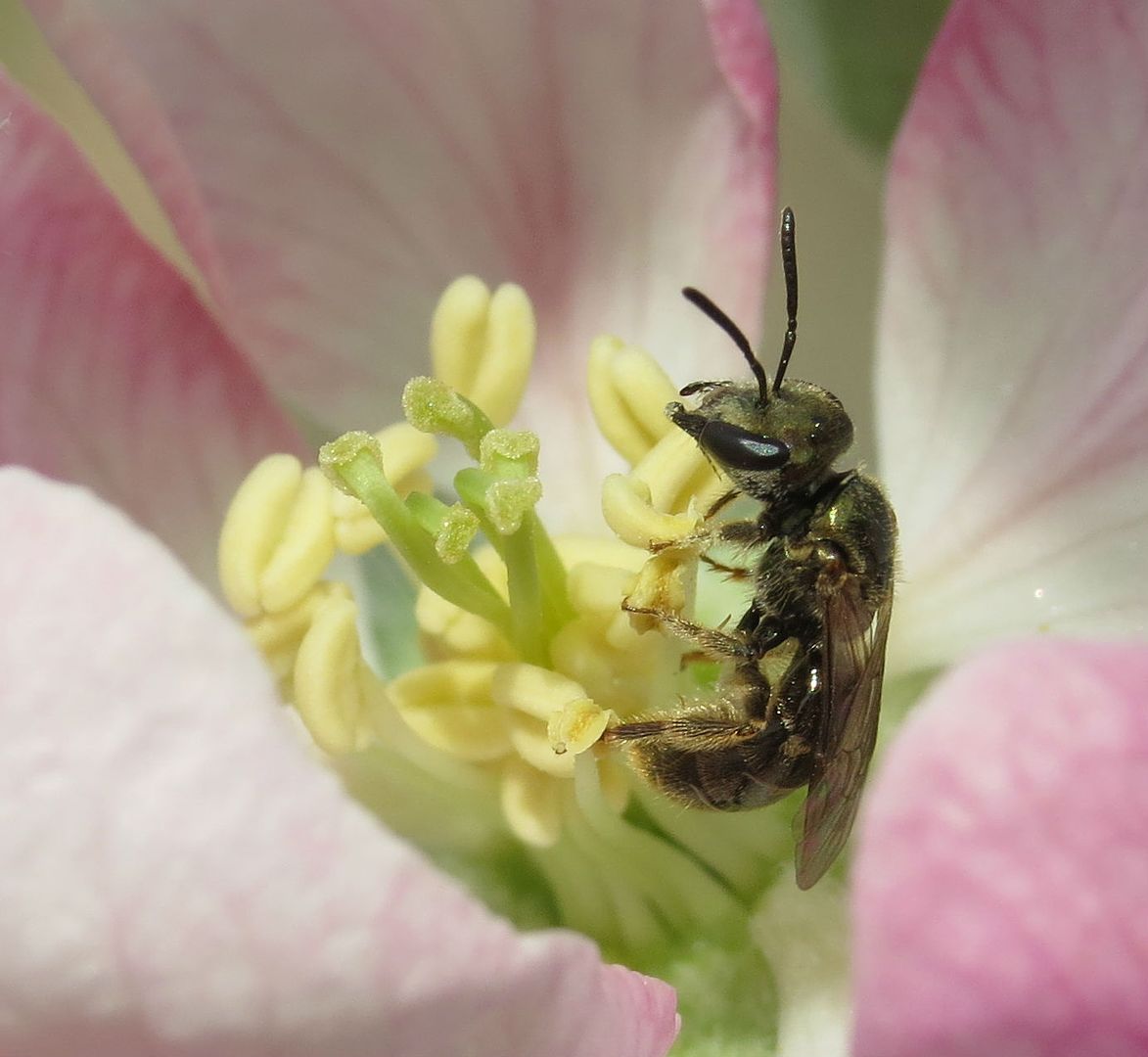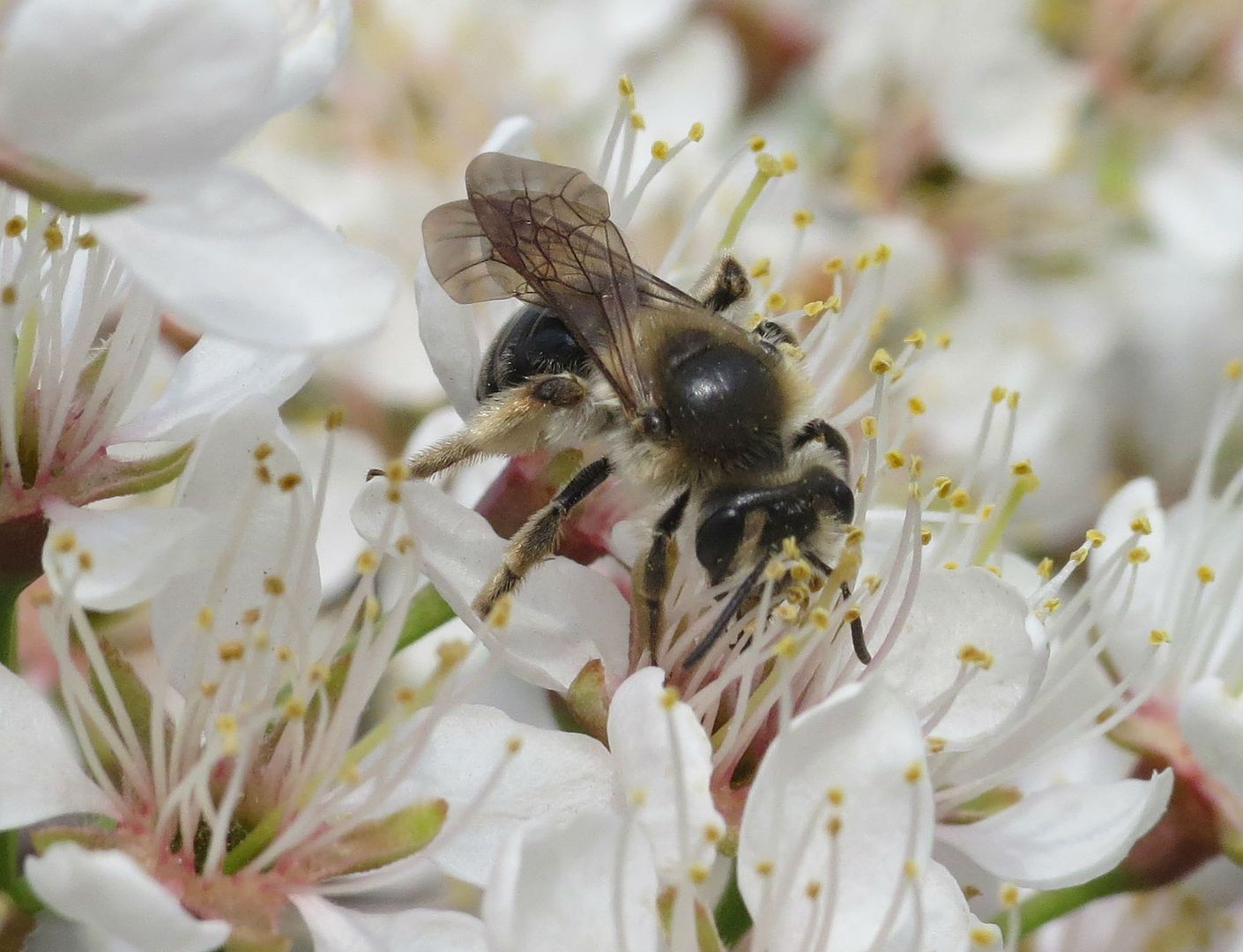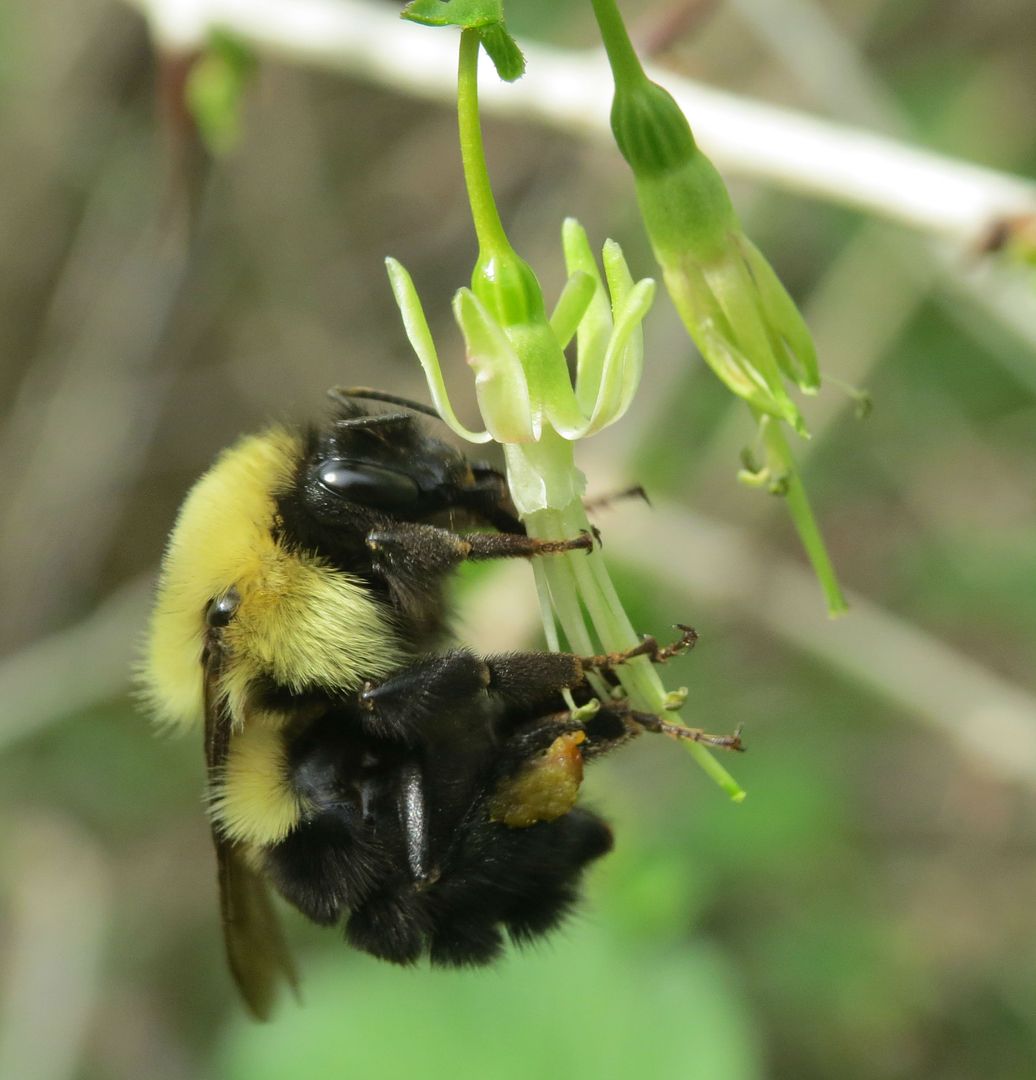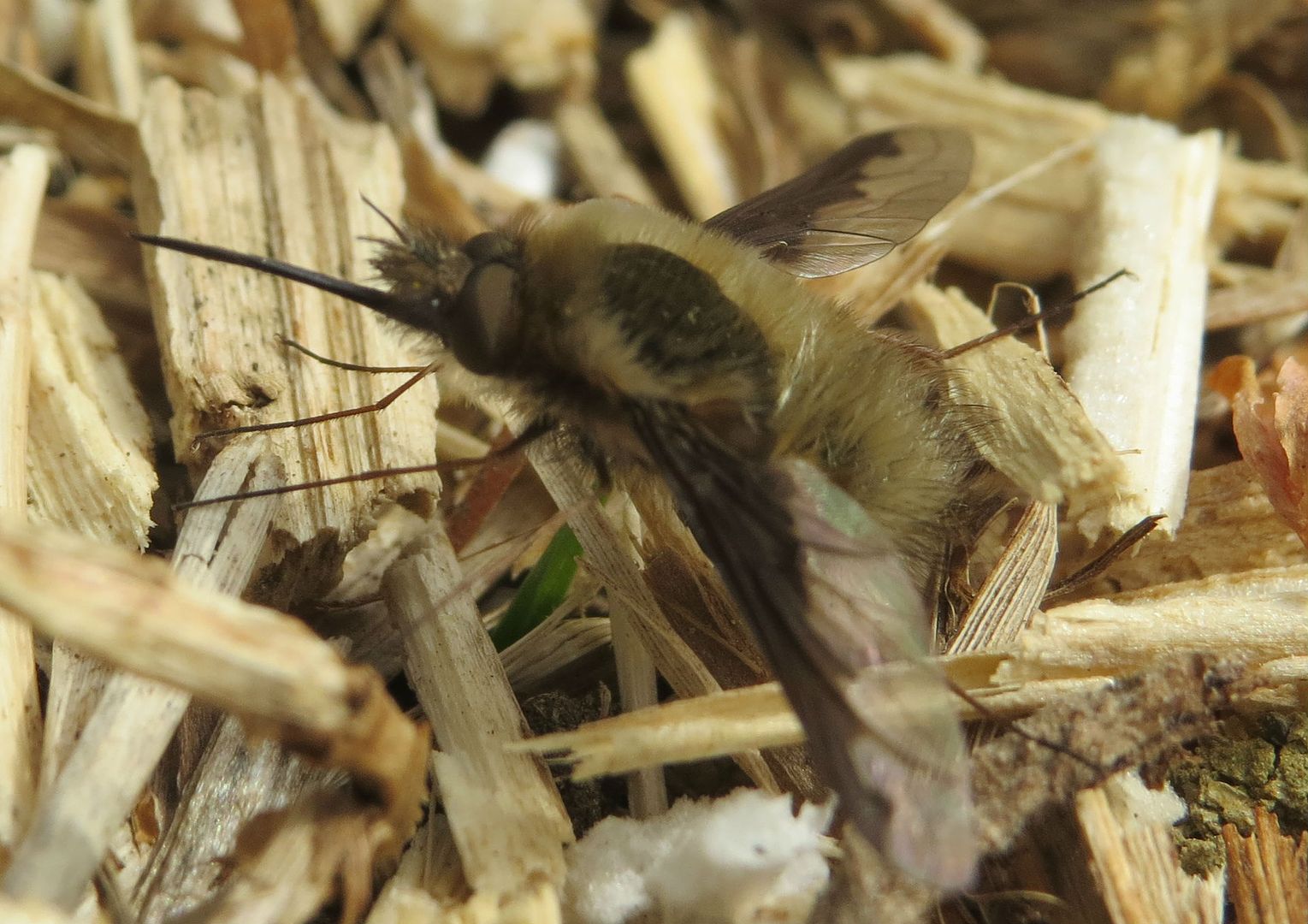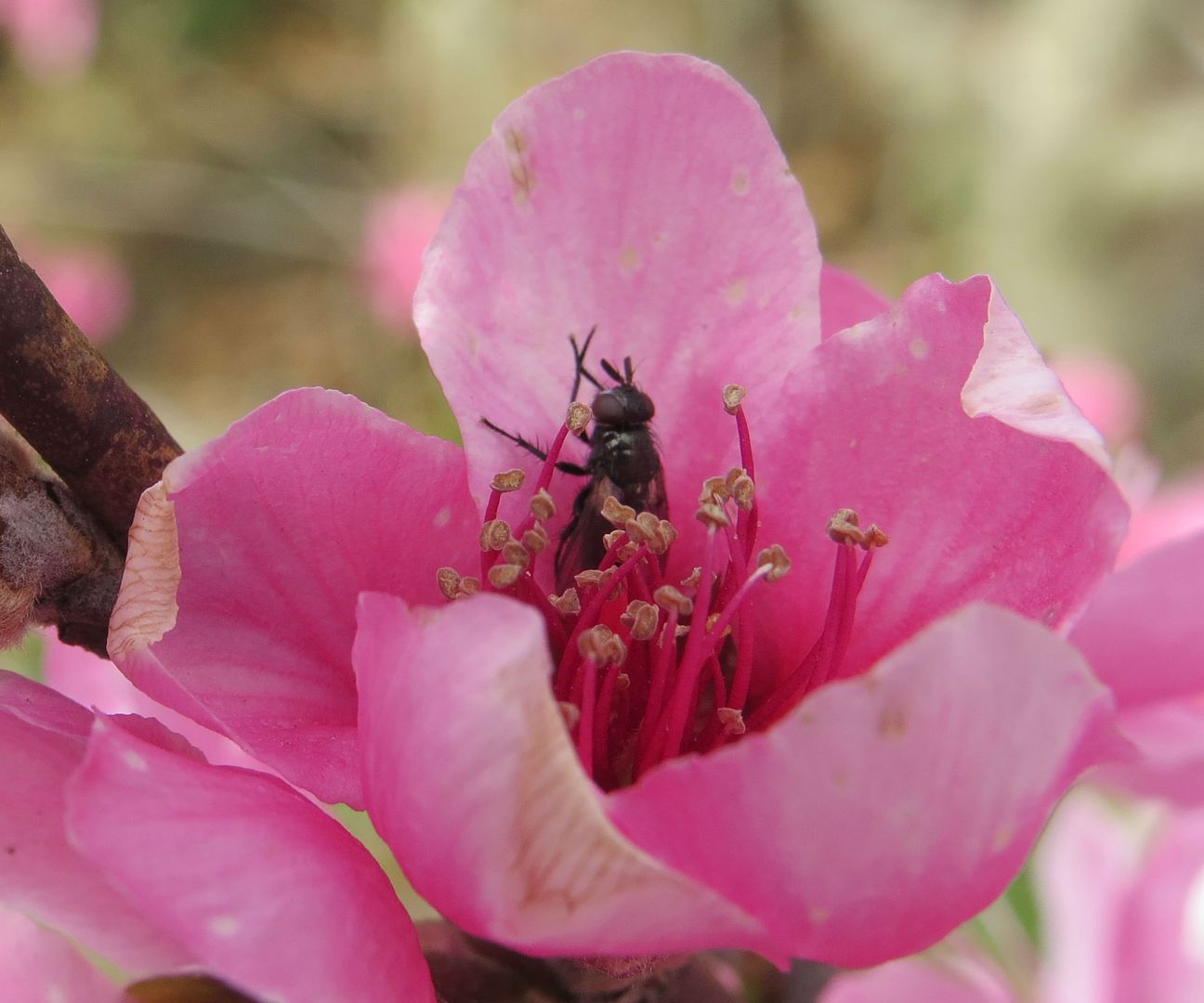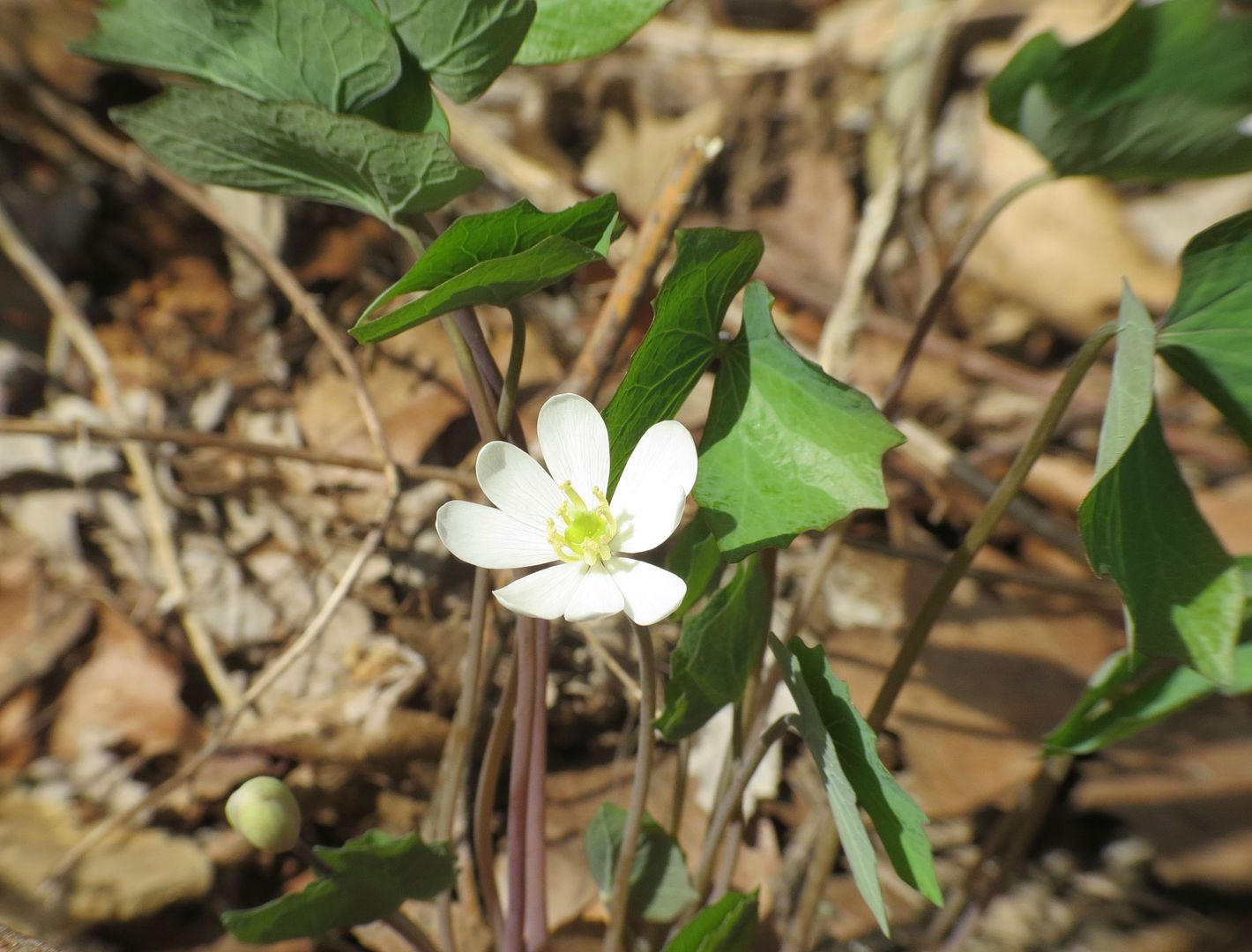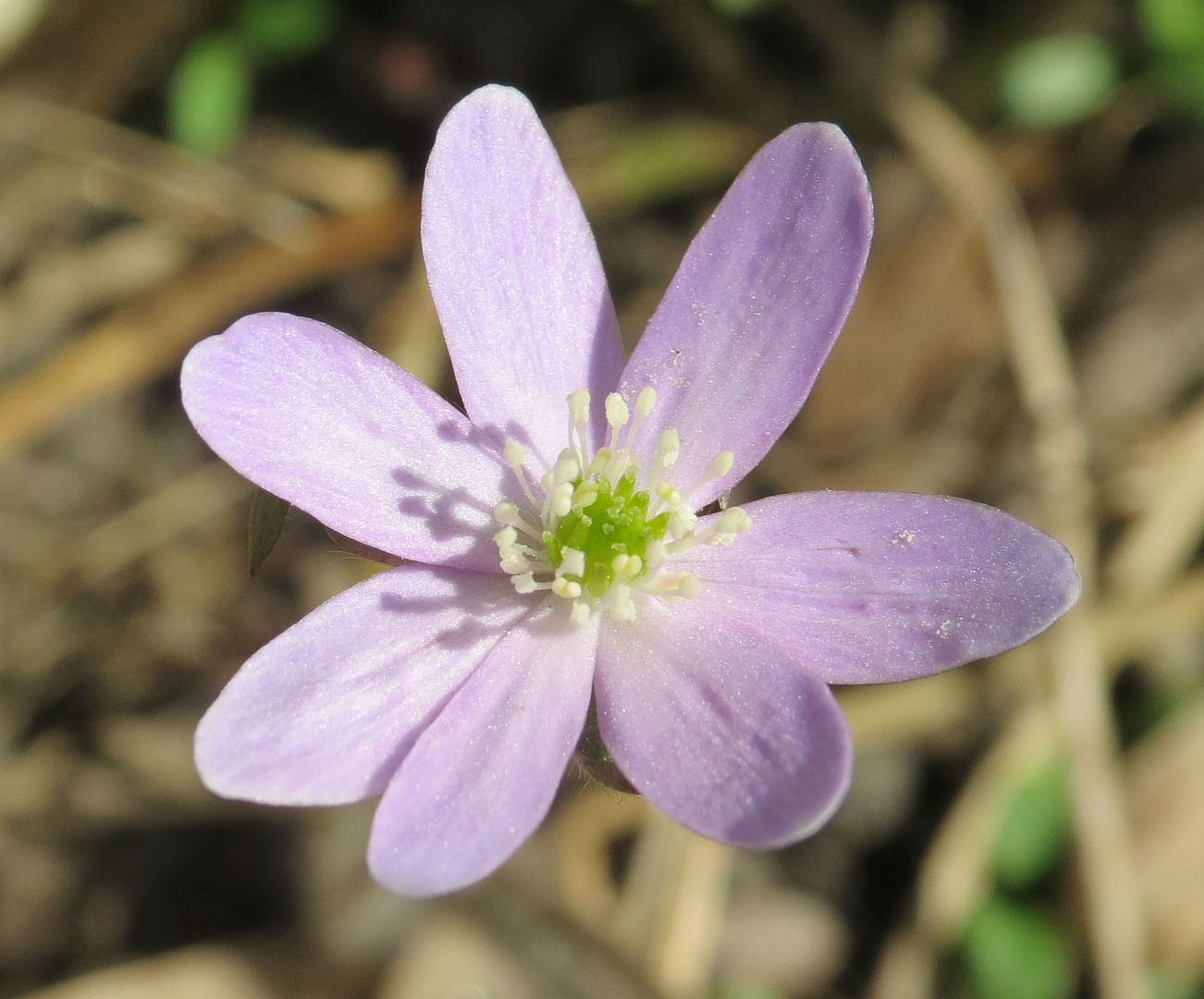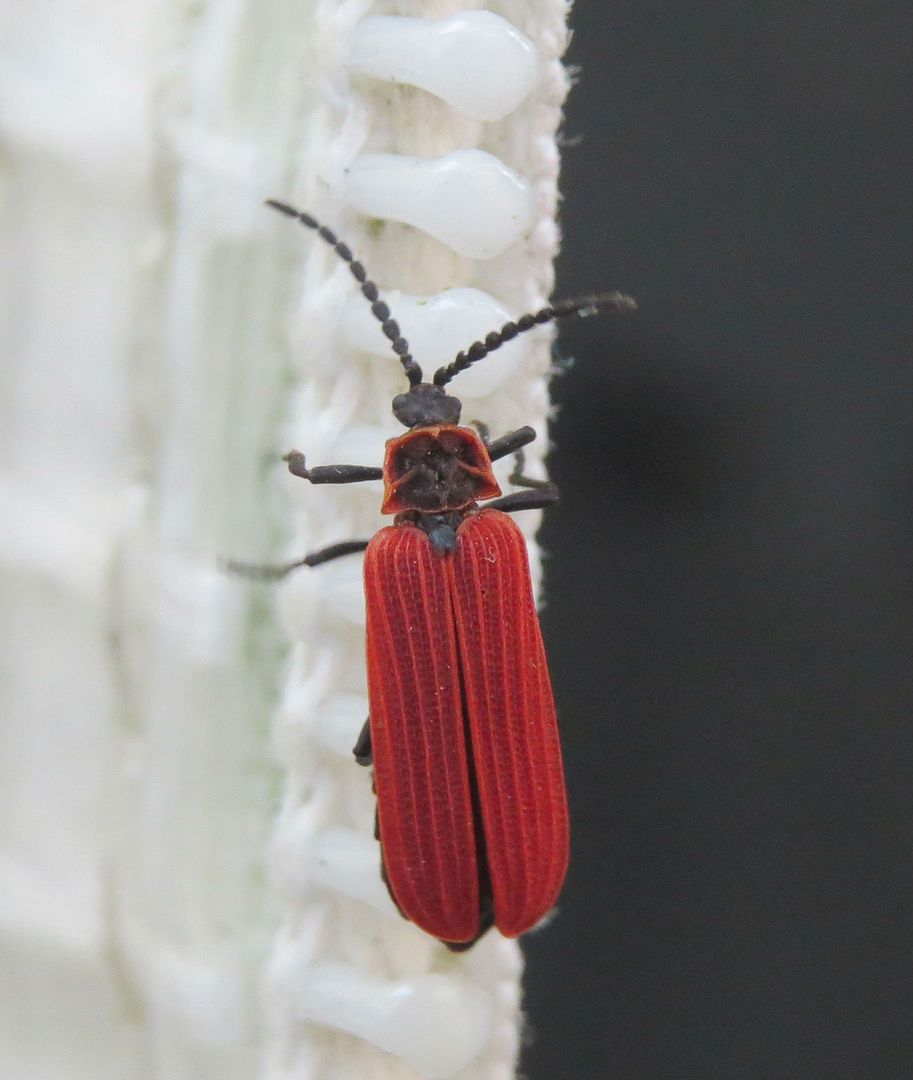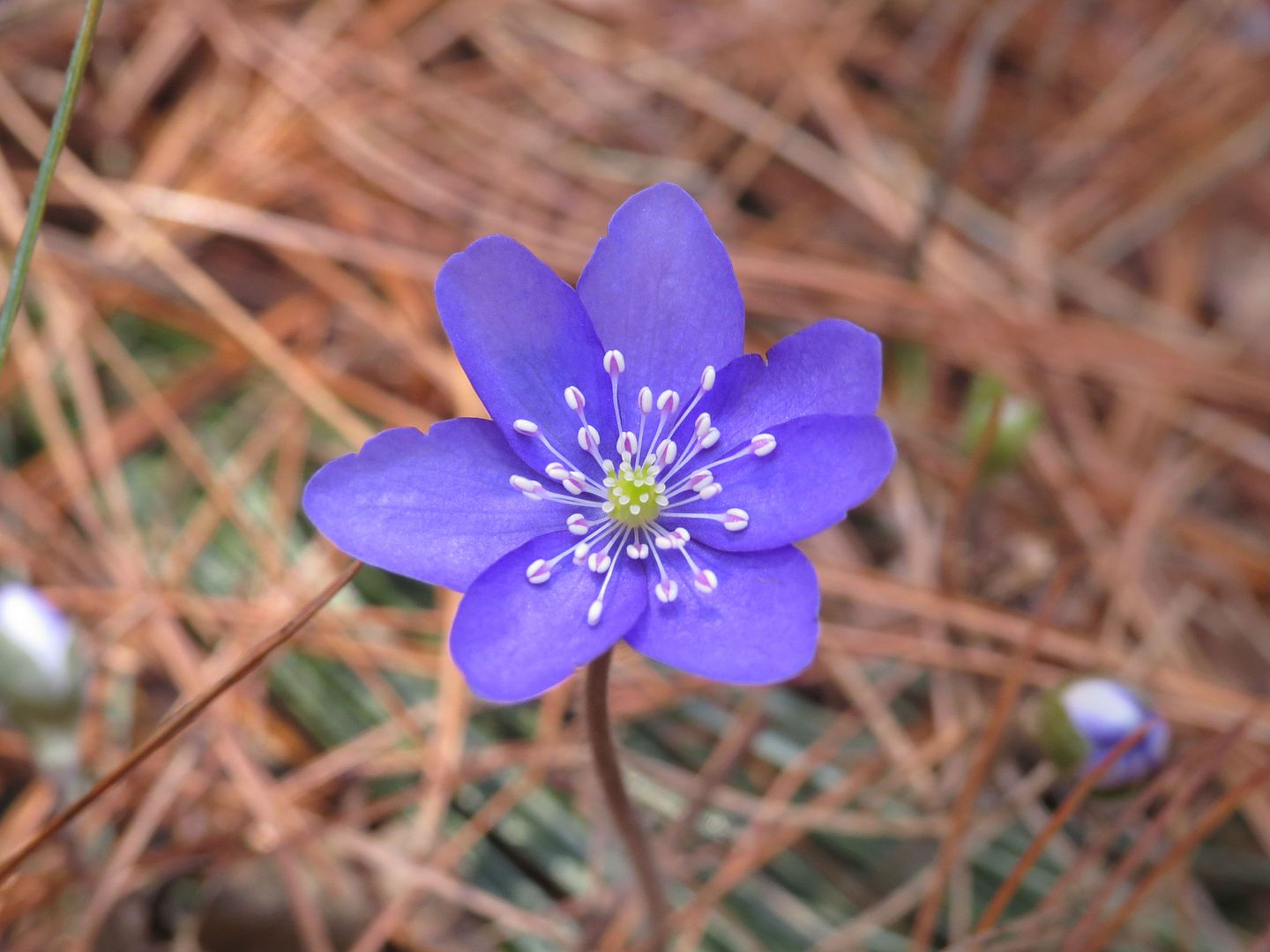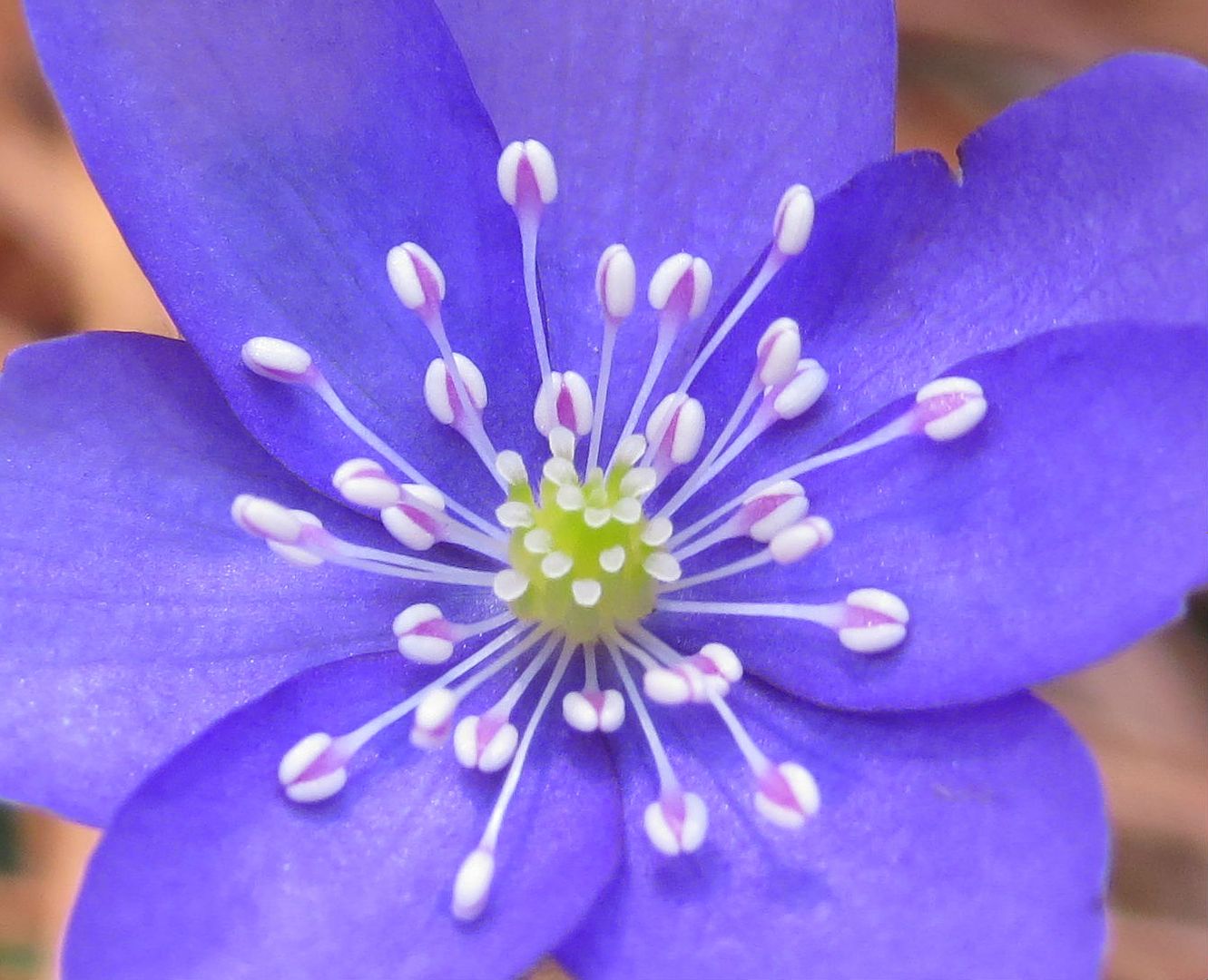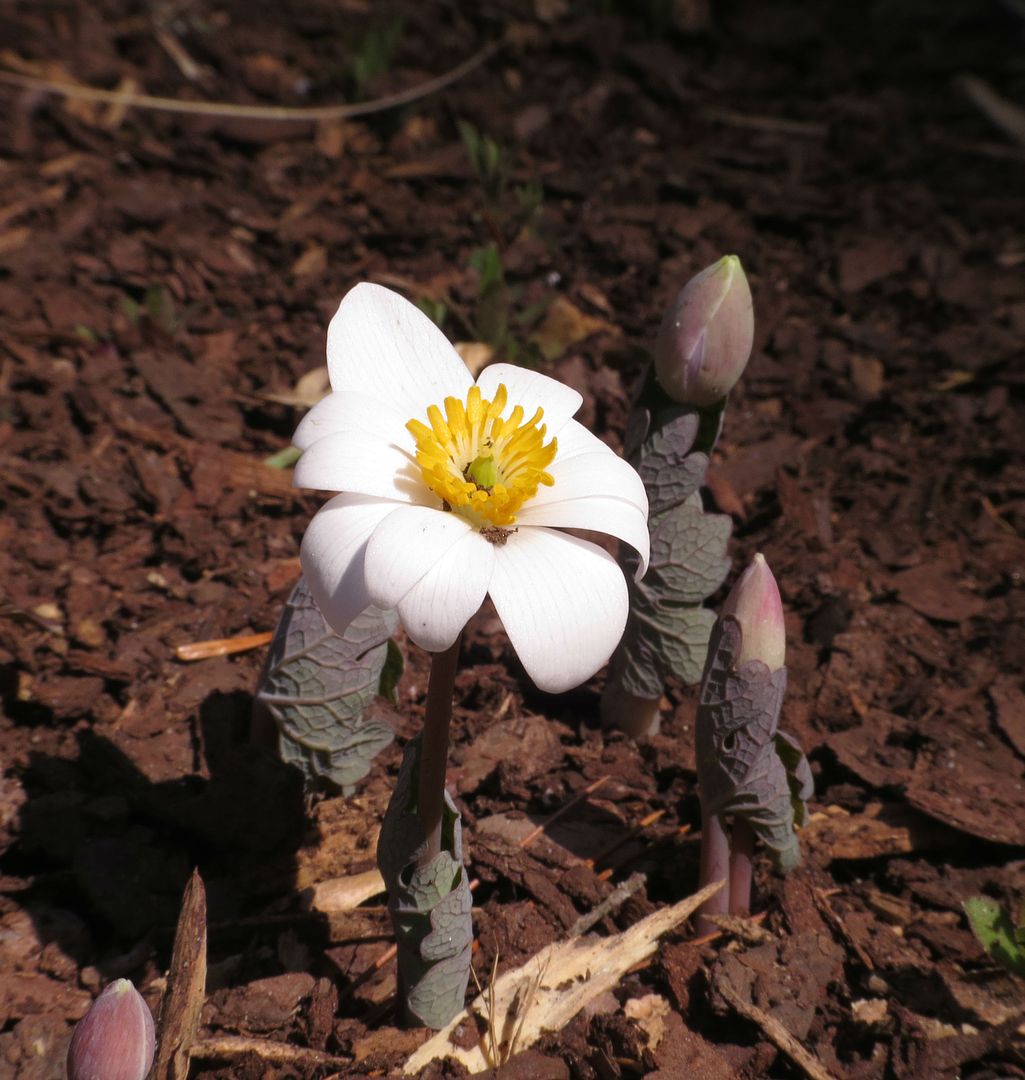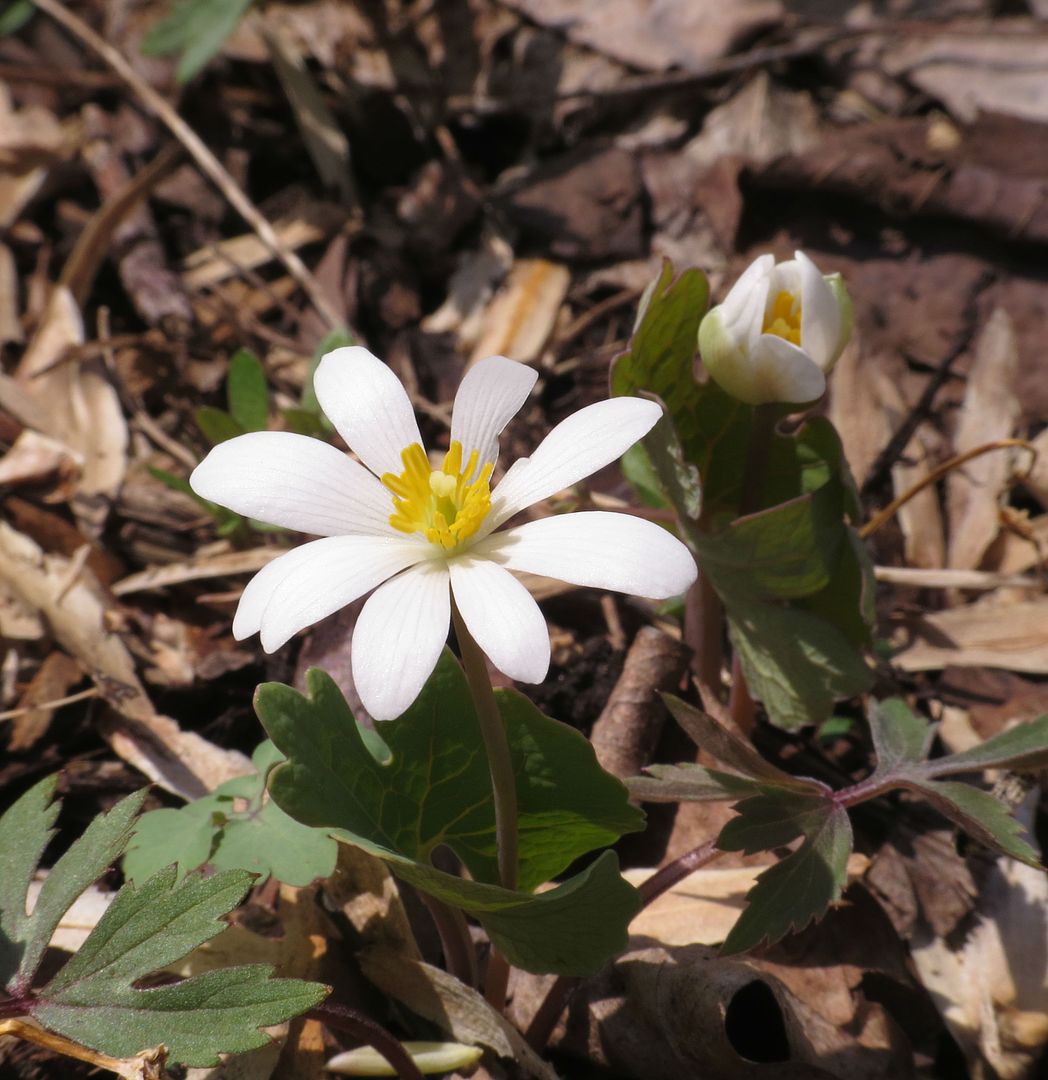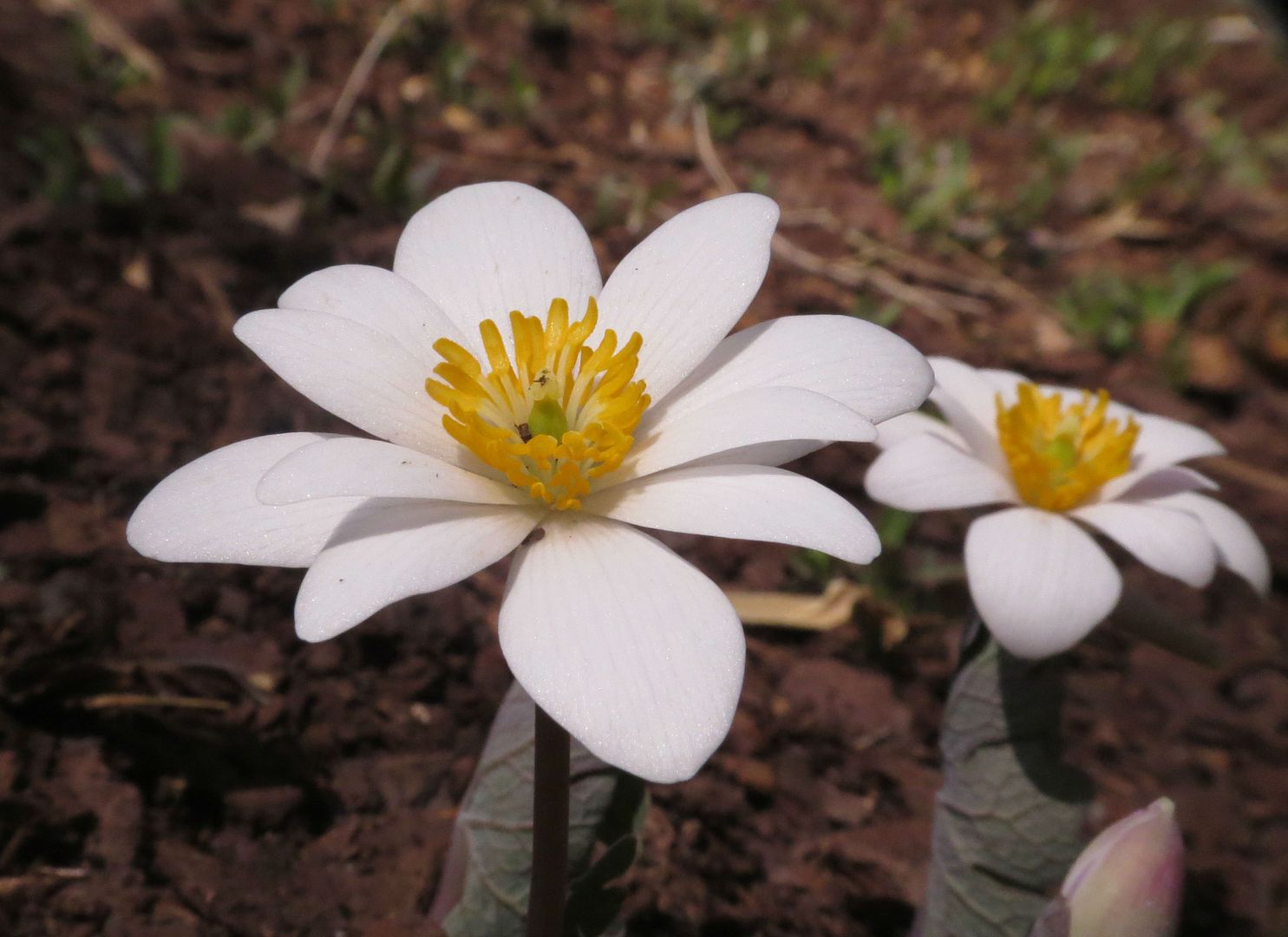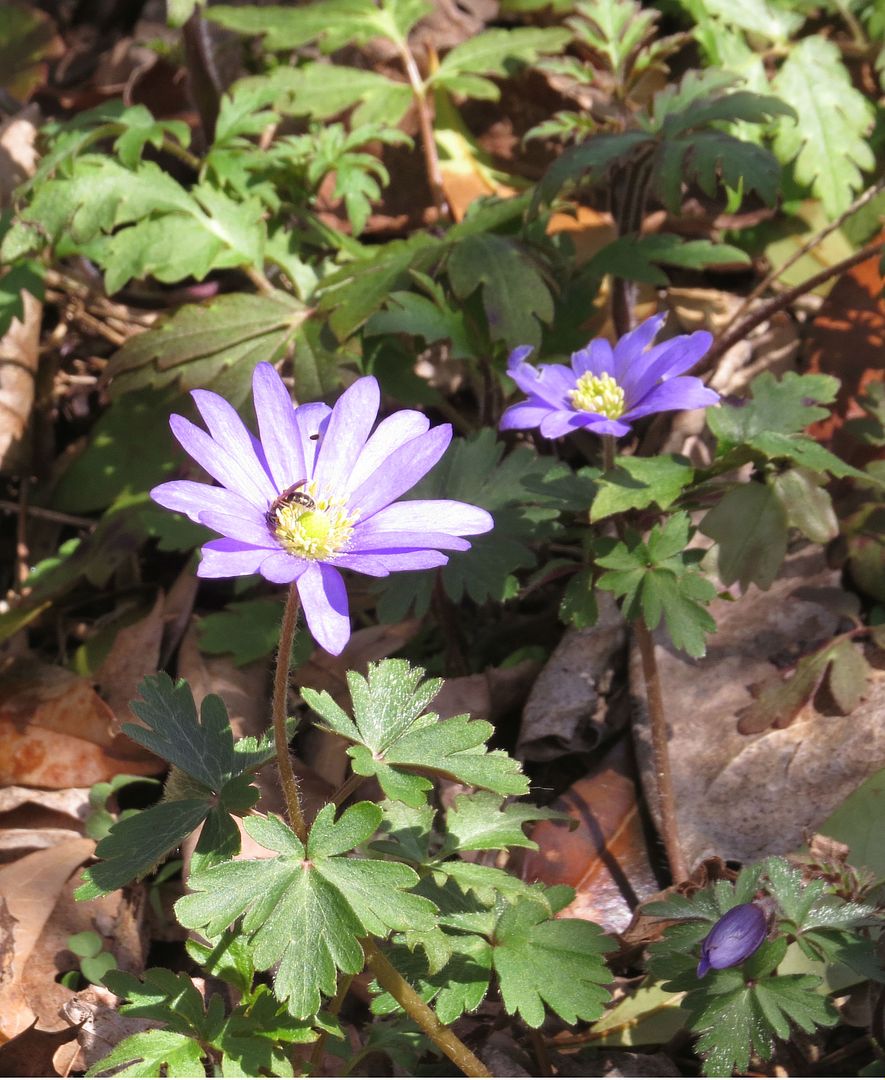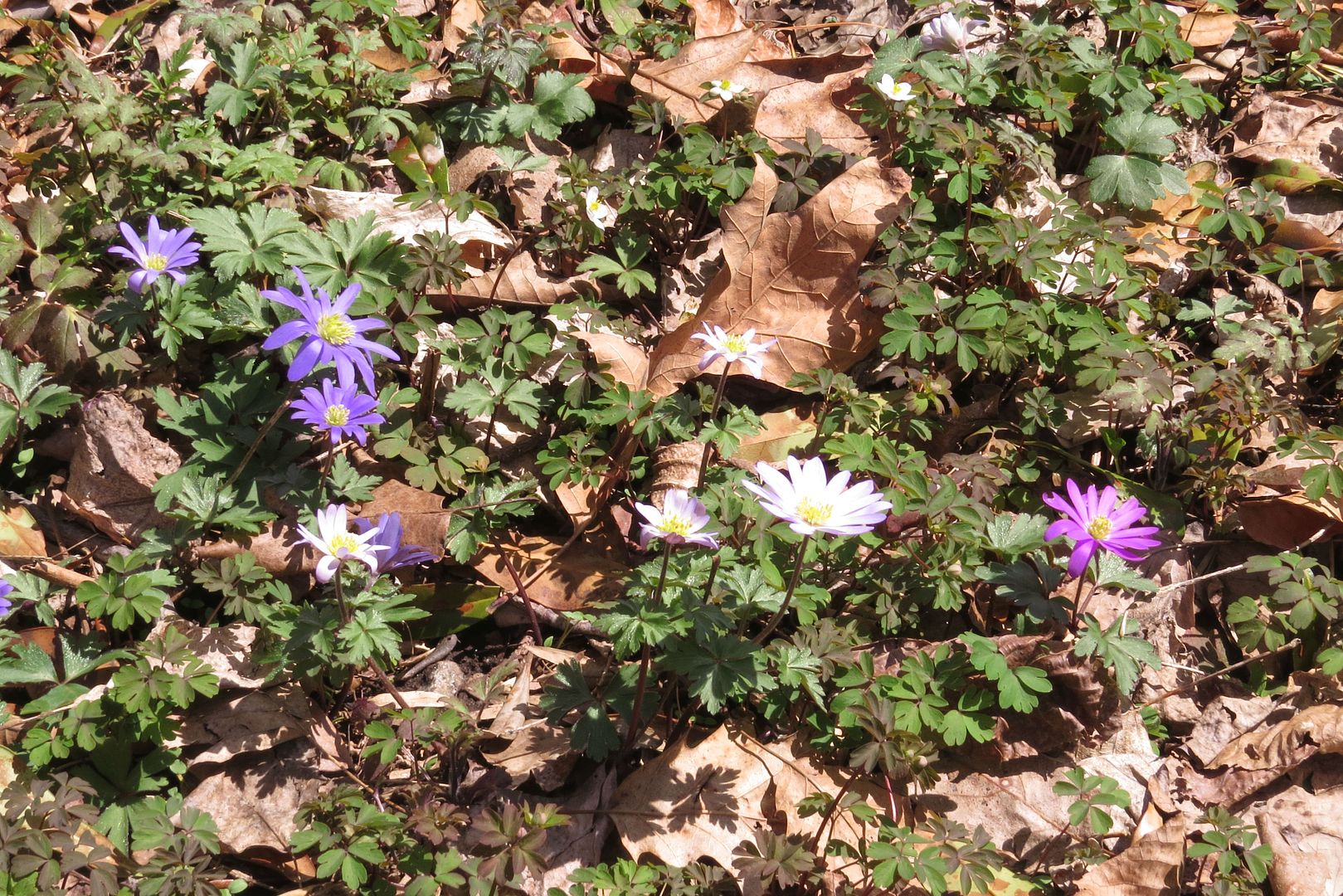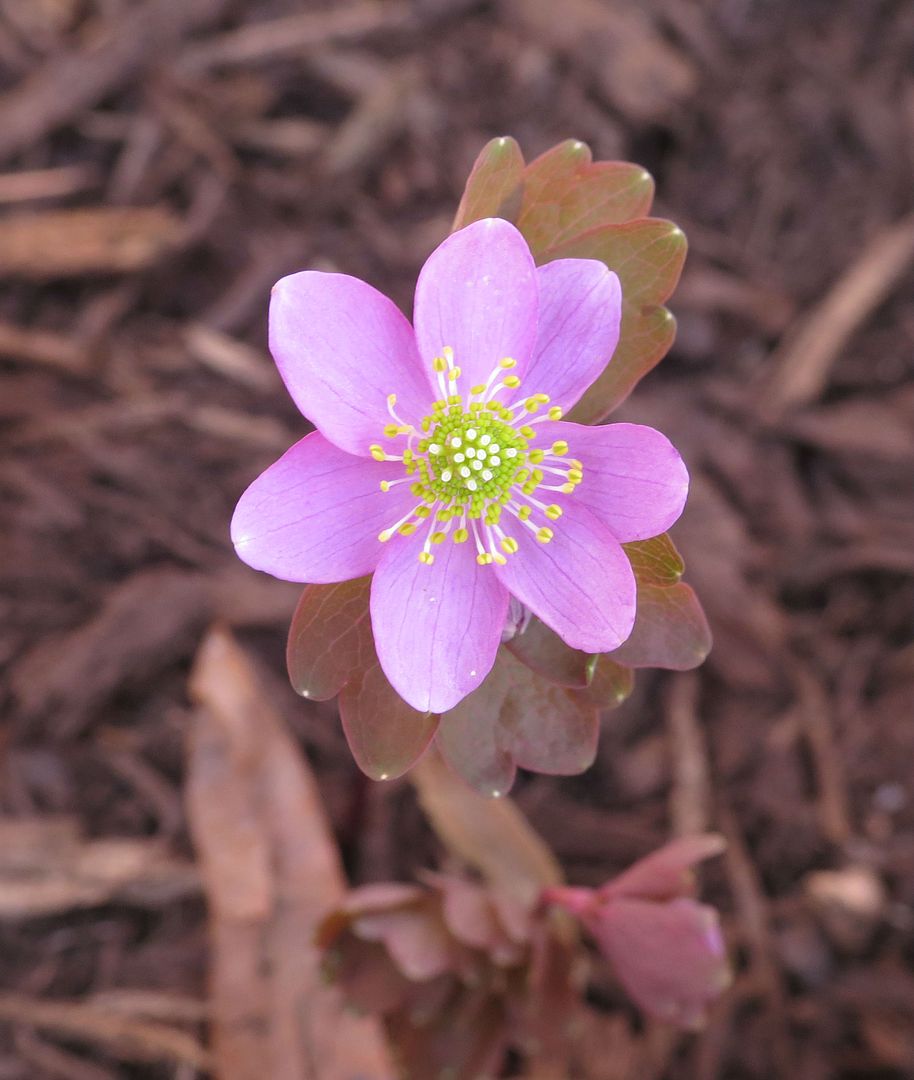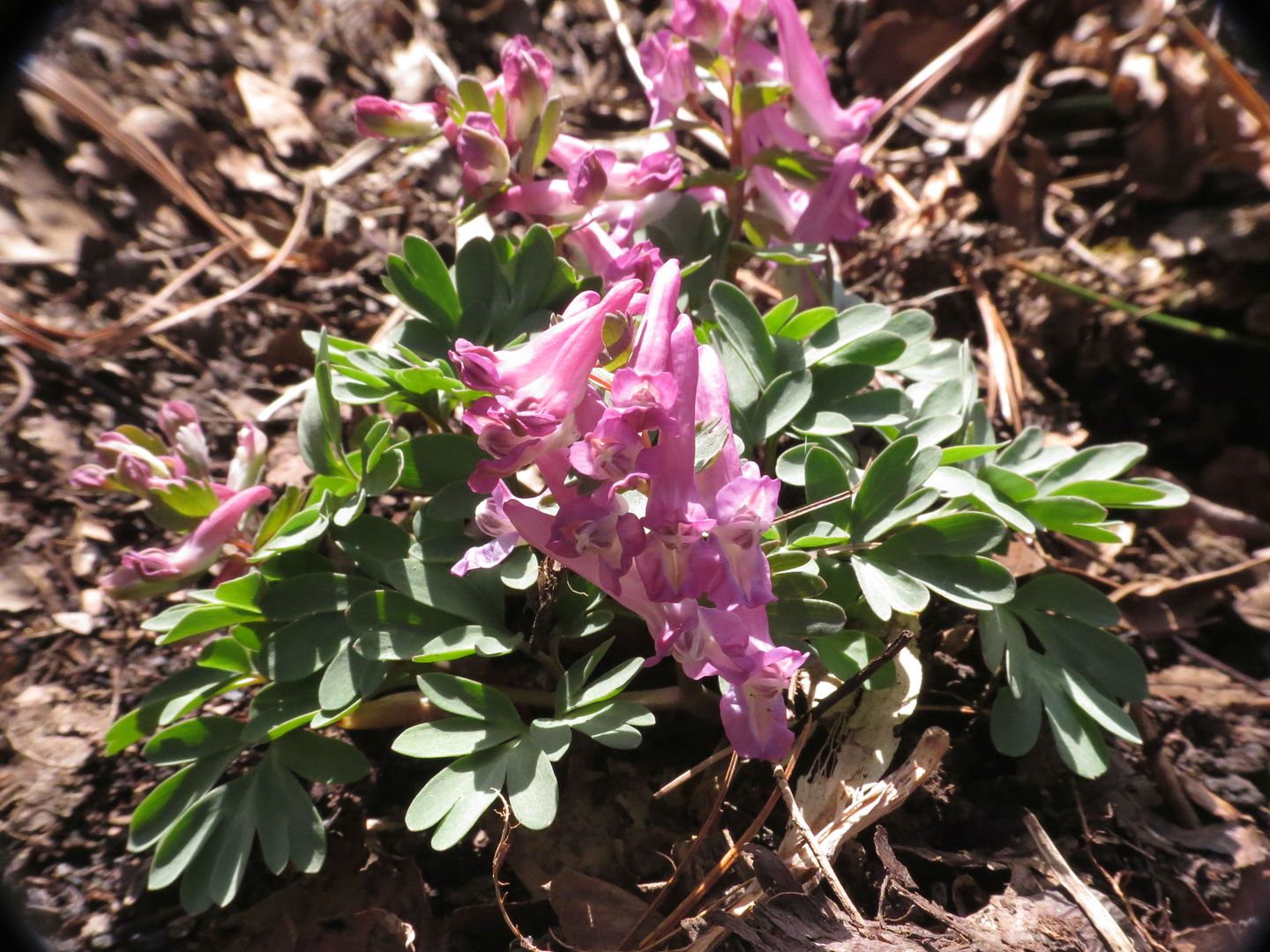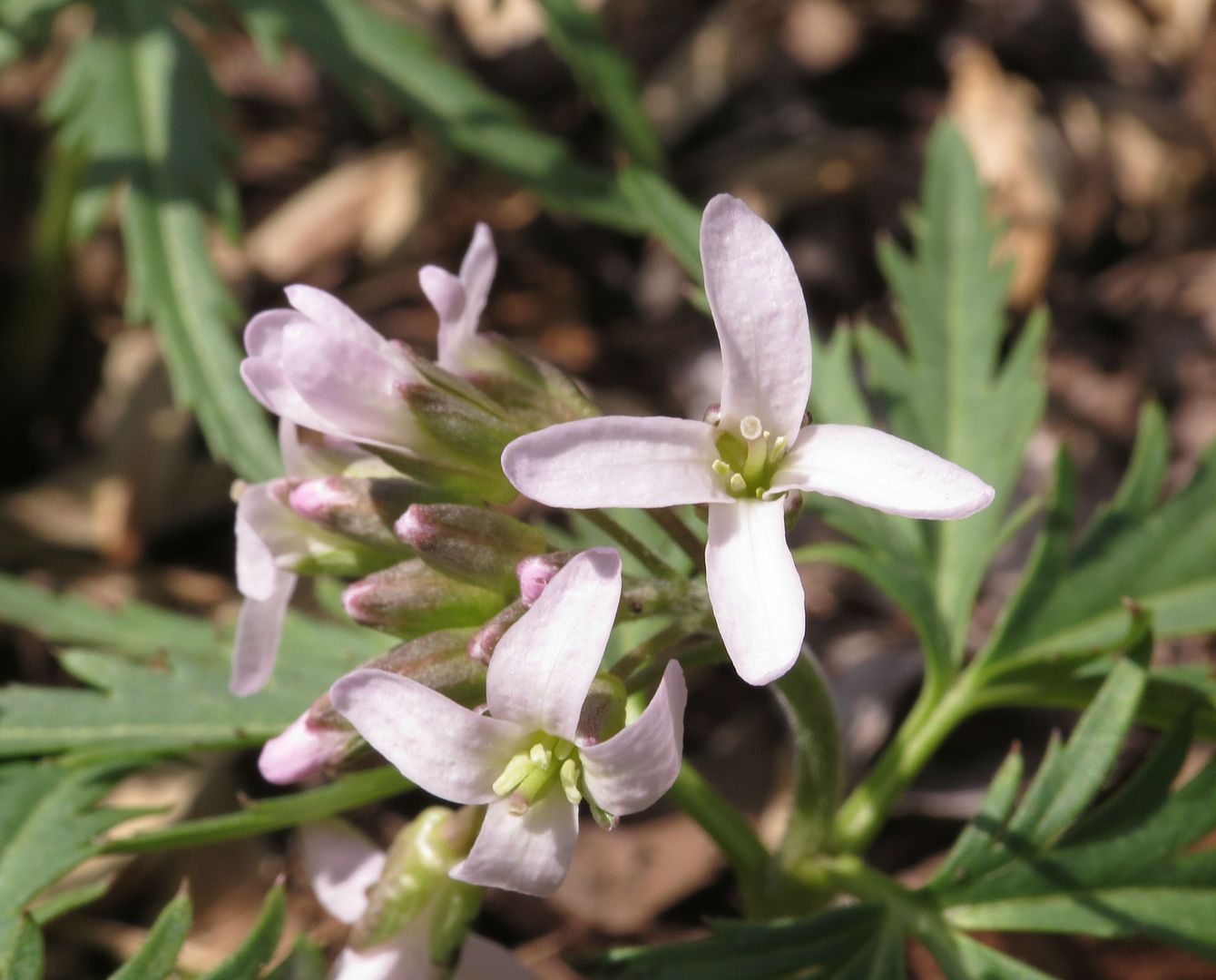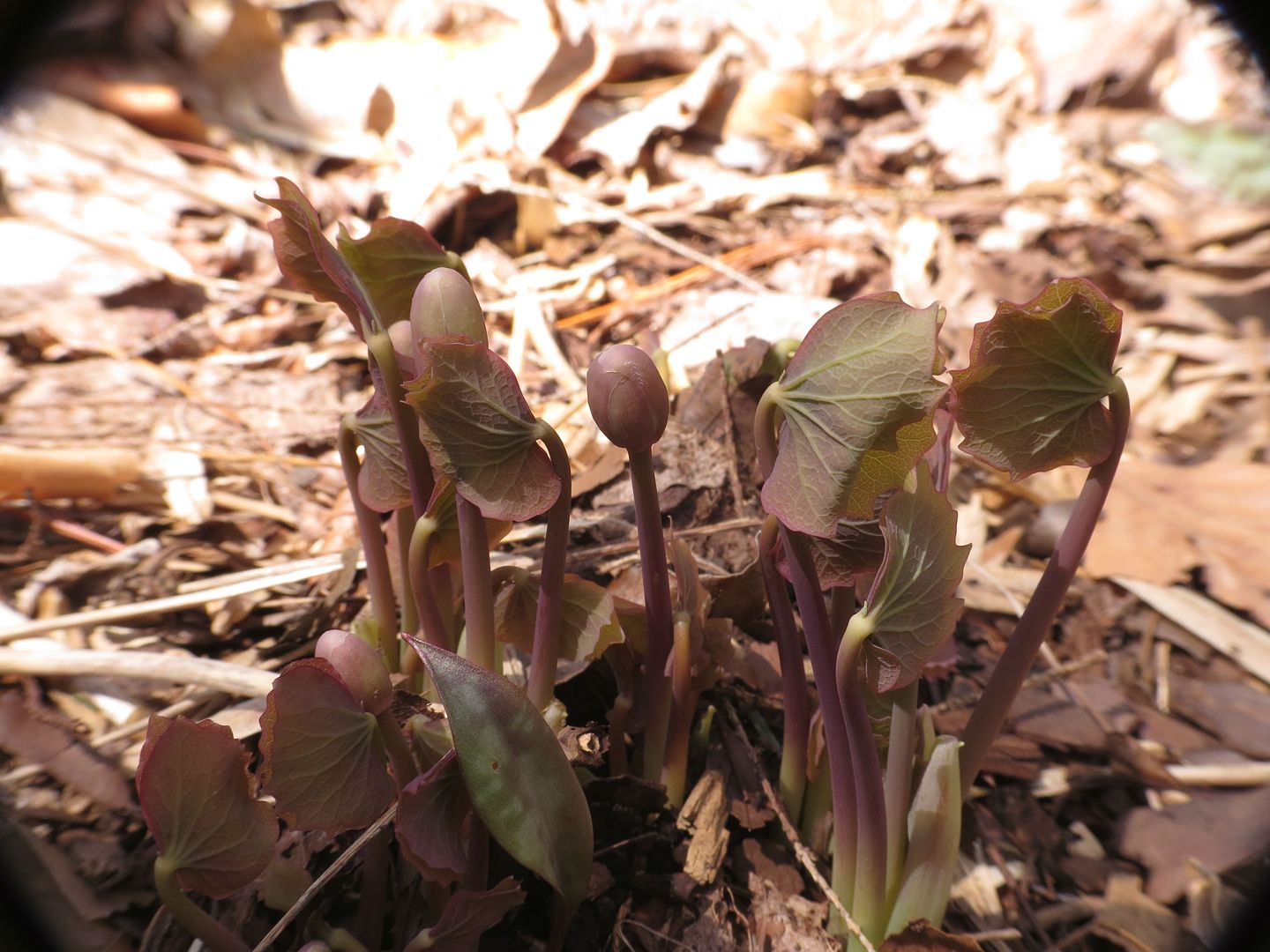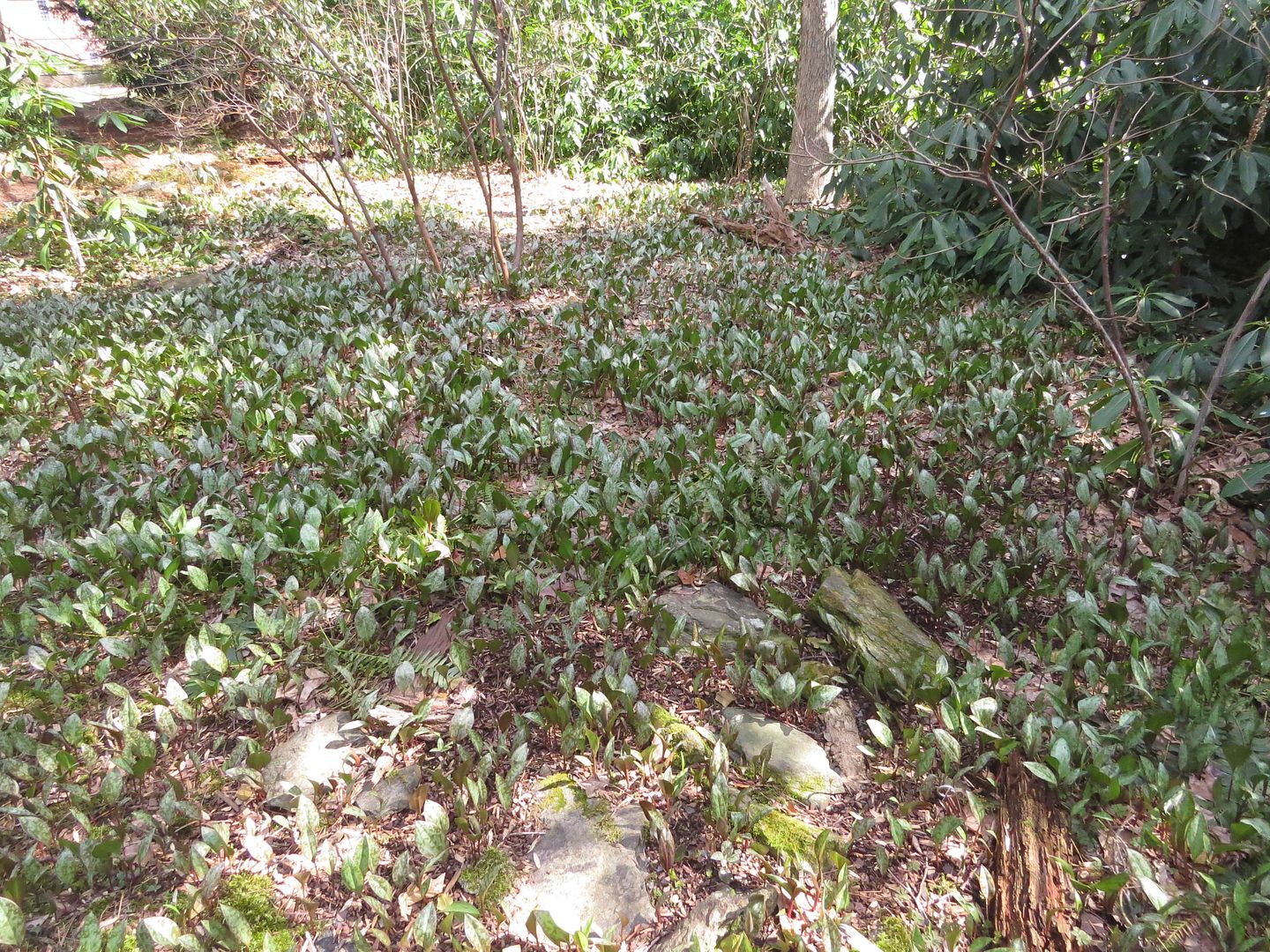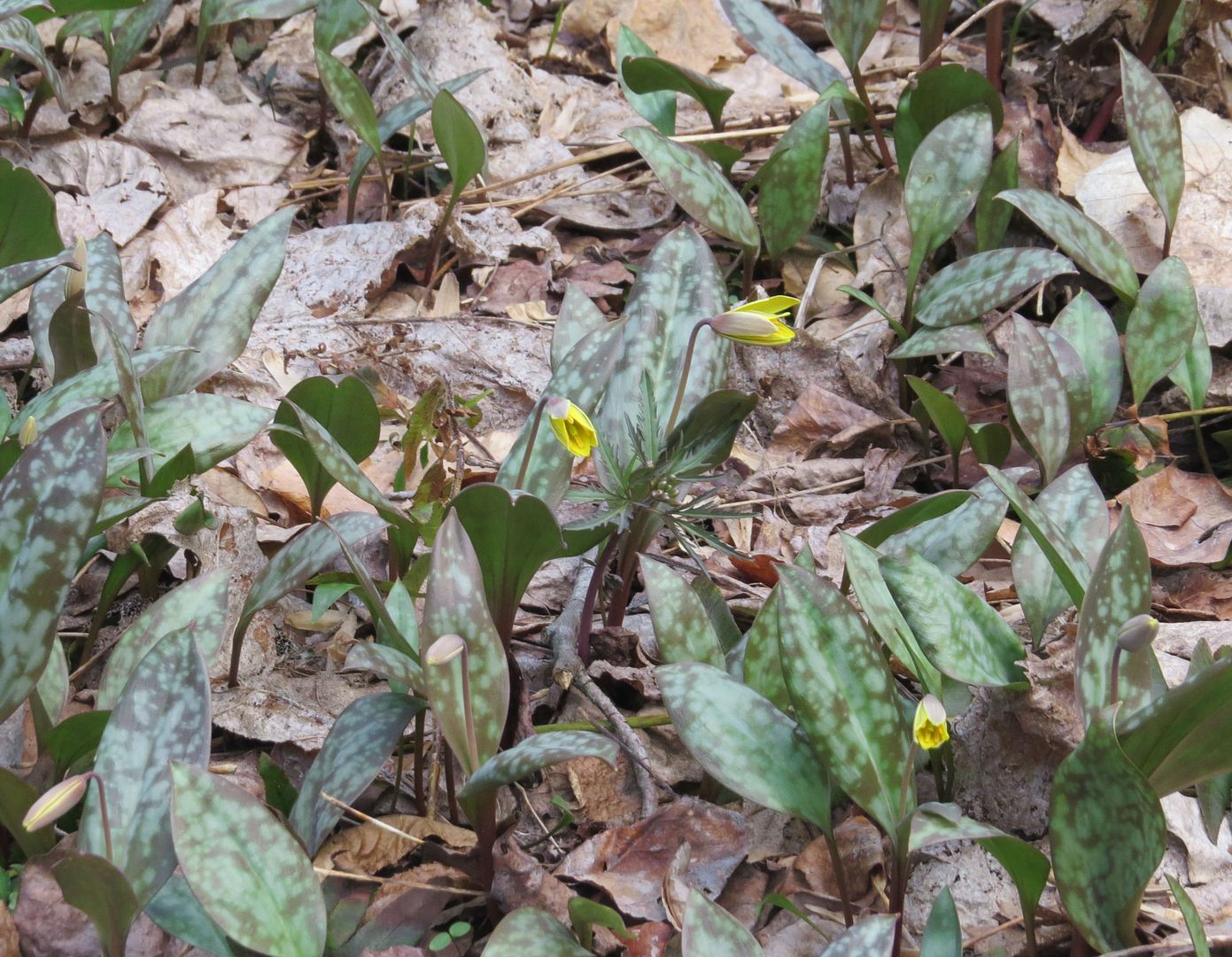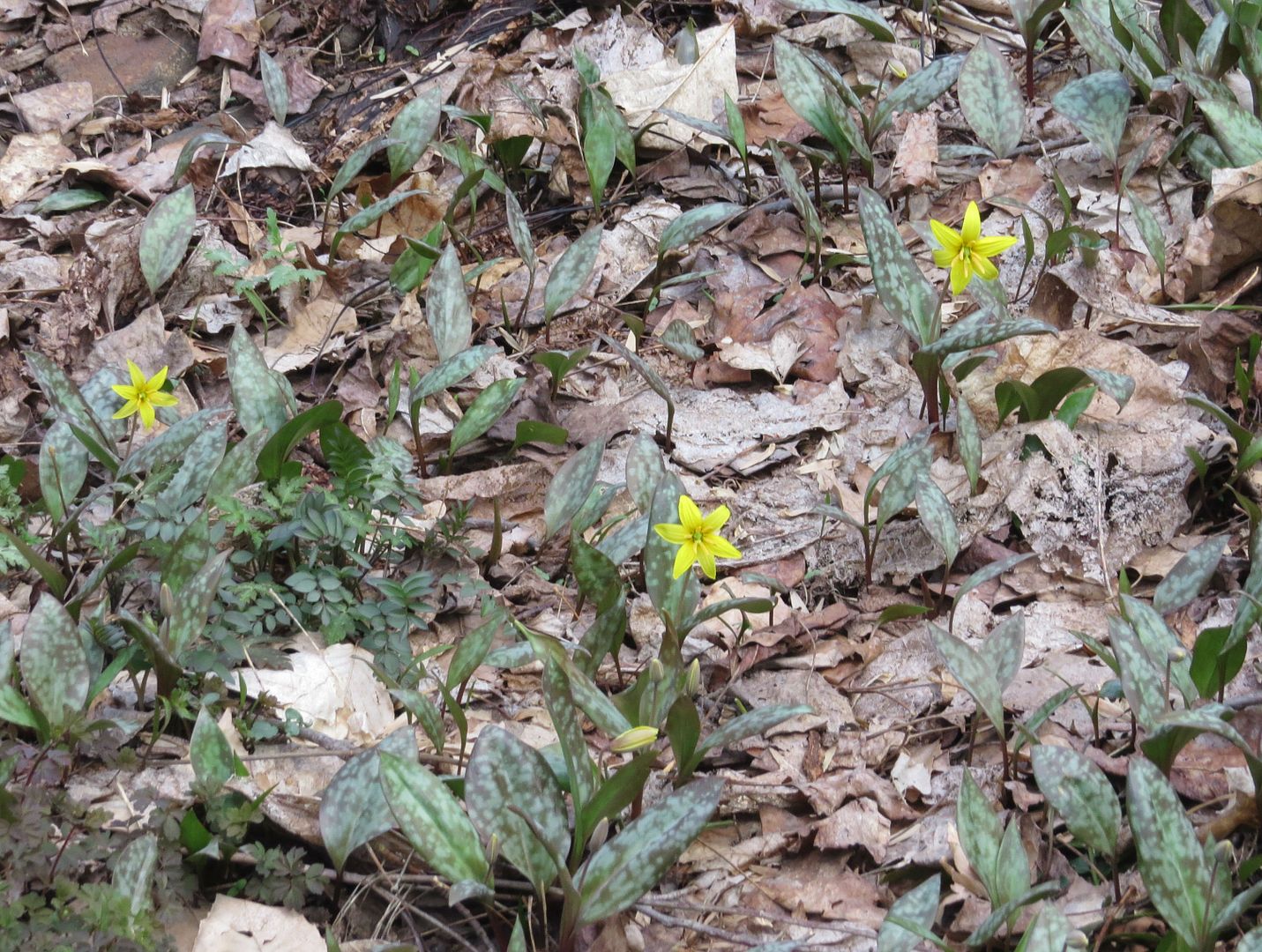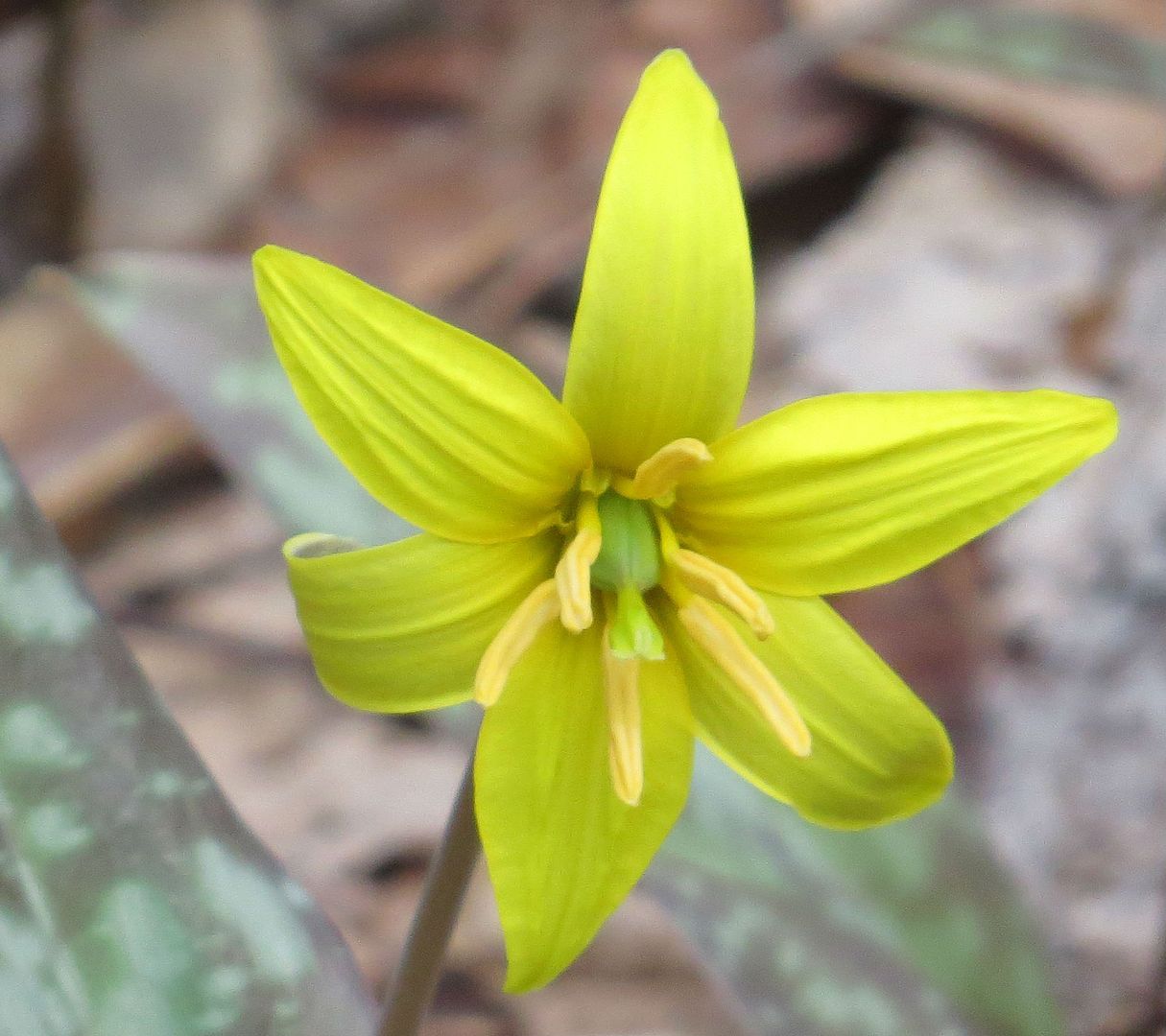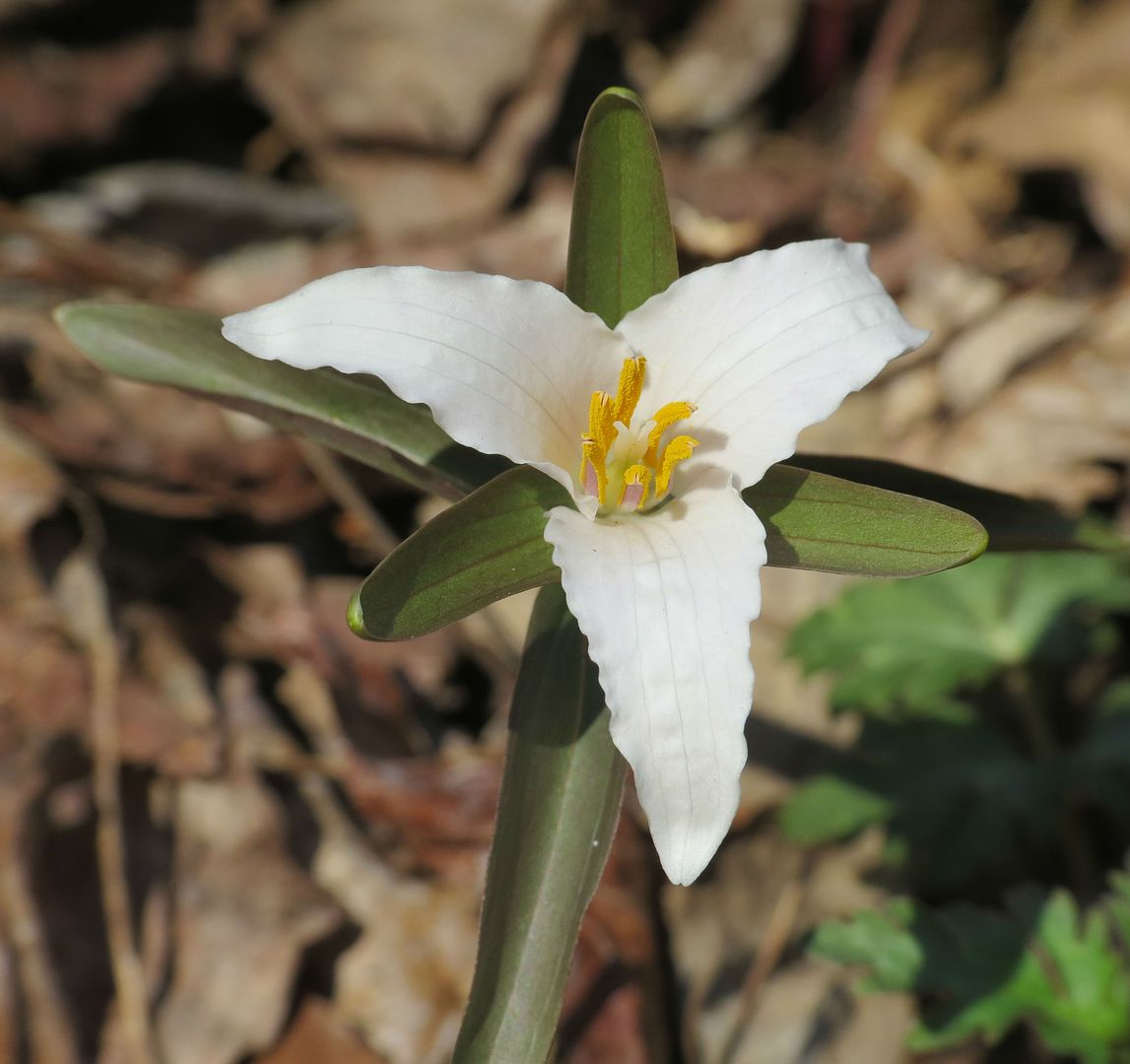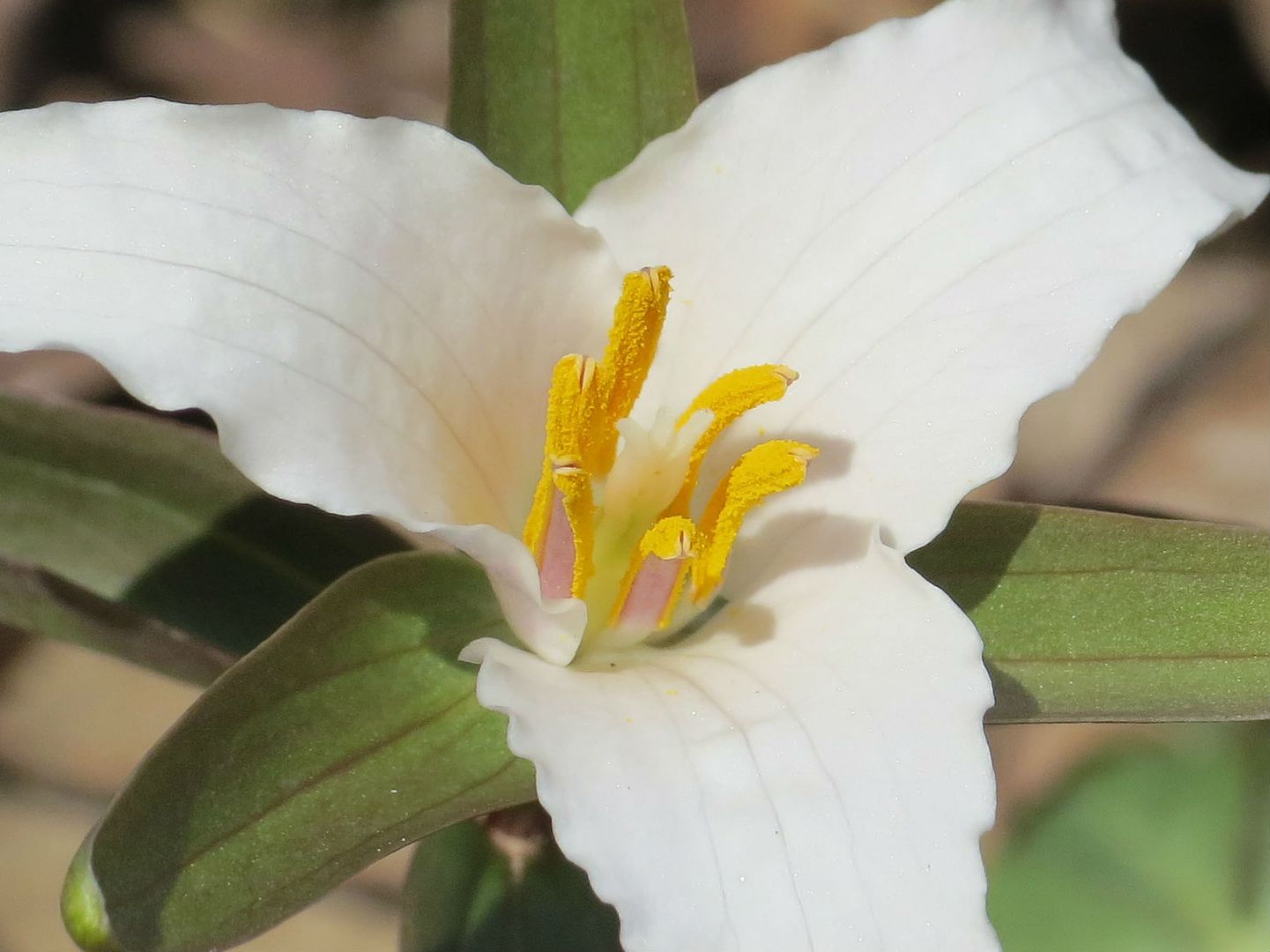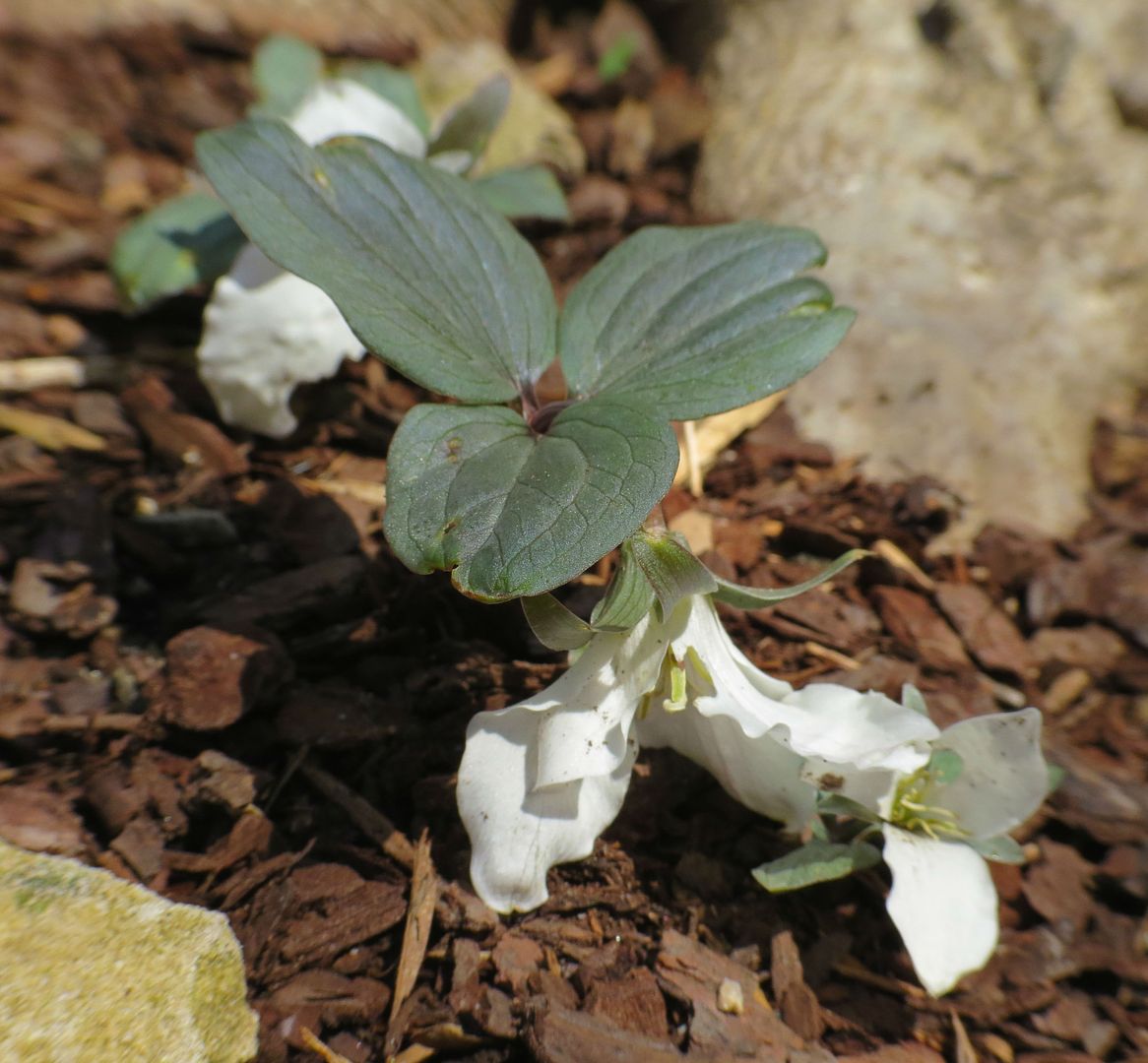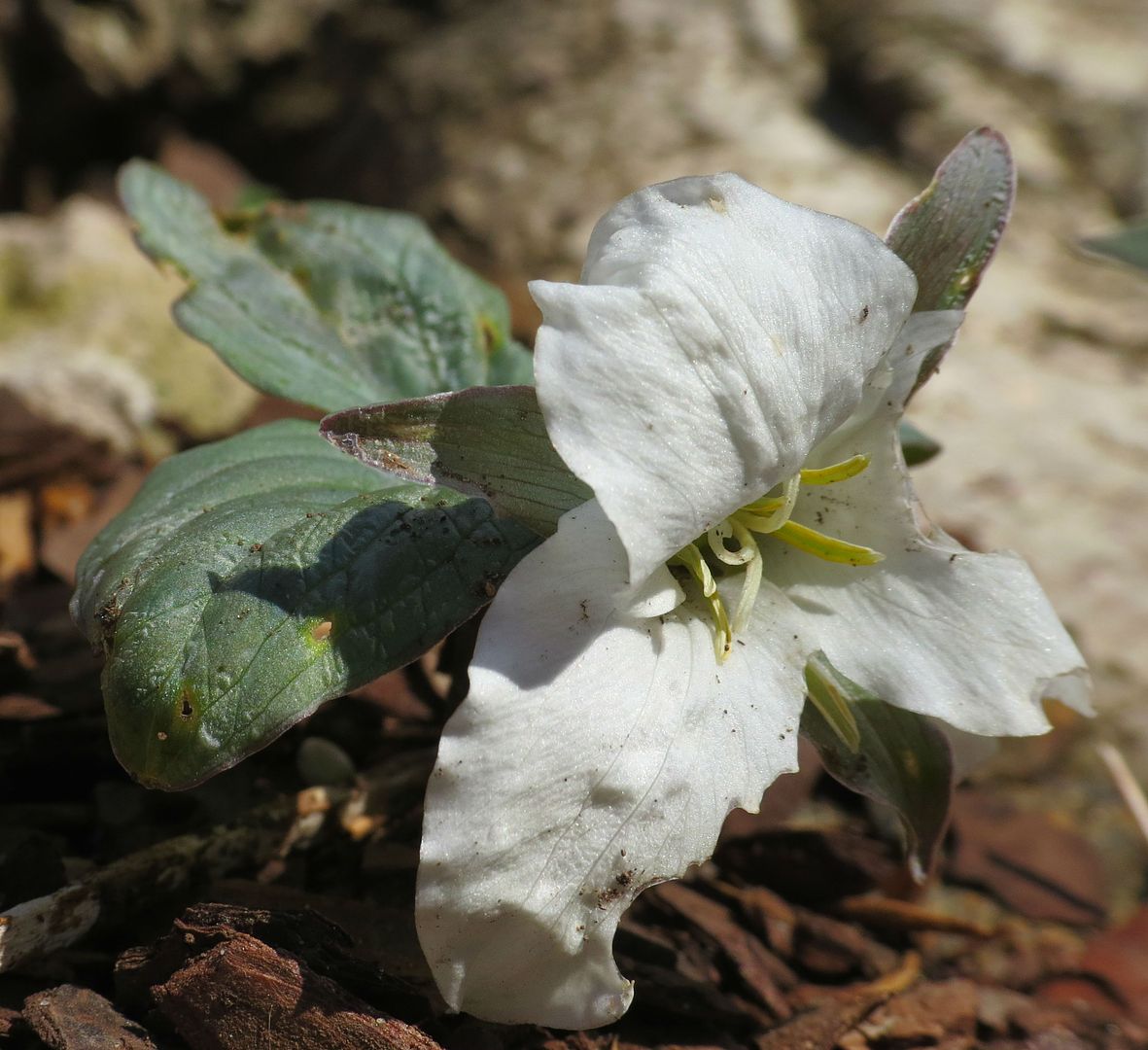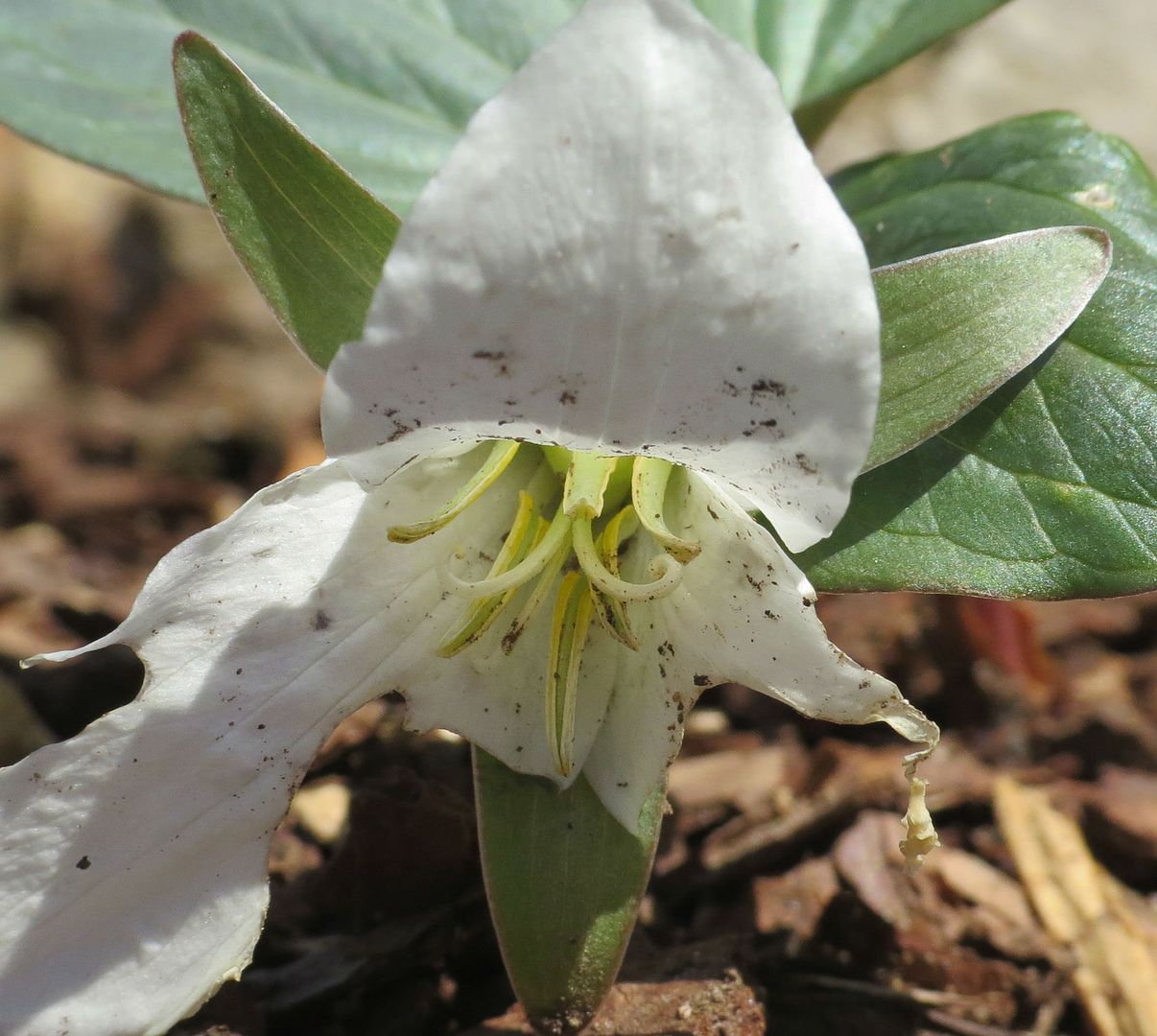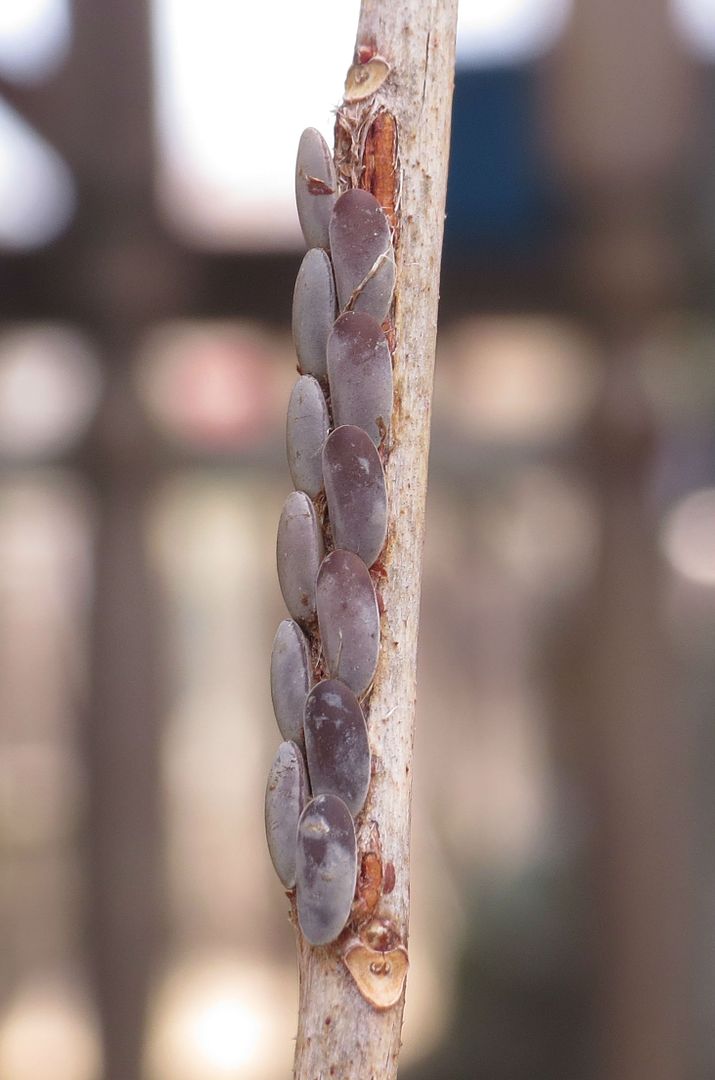Although it was a breezy cool day in the 60's, I managed to have some fun with my camera today. Here is a sweat bee taking refuge from the chilly air in the flower to an apple tree. They were collecting pollen but a few, (males?) that were hanging out in the flowers. Apples aren't quite at their peak here.
Here is what I believe is a mining bee working the native plum trees. There are tons of flowers on the trees this year so I should get another bumper crop like I did two years ago. I was pulling 800+ plums off of each tree, though native plums are small and bite sized. Still though, it was quite a lot of fruit for a first year's flowering.
These types of bees like to burrow in sandy hillsides usually clear of tall foliage; often in full sun, though the early species/generations work do full shade just fine because the trees haven't filled in yet. I'm not sure how successful these shaded burrows turn out though compared to ones in full sun. But of course tall grasses and forbs may grow more abundantly on sunny locations.
Last week I saw all the queen bumblebees flying about looking for nest locations. And now I see they've all settled in it seems. Bumblebee queens that are collecting pollen are committed to starting a nest. Pollen if fed to developing brood while the nectar of the flower feeds the adults. Some nectar is turned into honey too and also fed to the brood but bumblebee honey is runny and contains high amounts of pollen anyway.
Here I watched a queen visit the flowers to our gooseberry/currant. It was neat watching her work these small, inconspicuous flowers, when the native plum, apple, and peach trees are all right beside them. She was devoted to visiting each and every flower on this shrub, ignoring ones she already visited. I did see her fly to the plum tree once, but that was very clearly an accident on her part, as she virtually walked right over the flowers in search of the gooseberry she'd been working. Bees are often devoted to the pollen of the type of plant they work because the nutritional value can vary greatly from plant to plant. It's best to raise brood on one type of pollen to perhaps judge the results, or maybe it's detrimental to mix and match pollen types? Whatever the case, this devotion to one type of plant is what makes them excellent pollinators.
Also buzzing about were the beeflies. These do visit flowers, though the ones I saw seemed to be more interested in sunny themselves on the mulch. These mimic bumblebees to gain entry into the nest and lay their eggs in the hive. I don't believe all beeflies do this, others simply lay their eggs adjacent to the nest and the resulting maggots crawl inside, or have some other host/parasite relationship worked out with other things. I don't see them that often honestly.
And lastly I thought it was interesting to see some actual flies doing some pollinating. This was on our peach tree, which the honeybees were also working in favor of the plum and apple. However, it was just cold enough that the honeybees weren't out in abundance for me to photograph. Flies though seem better weathered about the cold and were flying from flower to flower. This one was sipping at the nectar in the flowers it visited before turning around and darting off. To be honestly though it reminds me of a parasitic fly, so perhaps they were laying eggs or something as they visited the flowers.
Friday, April 25, 2014
Tuesday, April 15, 2014
Flowers Before the Frost
Here are some more wildflowers I found blooming out in the yard yesterday.
Twinleaf, Jeffersonia diphylla, among the hardest wildflowers to catch blooming. The flower only opens for ~8 hours sometimes lasting over night if you're lucky before the petals abruptly shed off. Seriously someone needs to develop one with a longer blooming period. I feel like a double flowering variety would be welcomed for this species!
The flowers come up with the first few leaves and opens a few days before they do. The seedpod resembles a green fleshy acorn. They need to grow in a slightly moist location or otherwise get watered in the garden periodically in order for the seed pod to develop. It can't be too wet though as I found out; I transplanted one to a wetter location and I don't believe it survived the winter sadly.
I actually have a bunch of Hepatica planted in the yard. I assumed they were all white or slightly pink, but this one seems to be almost a lavender tone. I'm hoping they'll self seed around a little and in a few years I'll get the deep blue shades that are so pretty.
Trillium luteum is the first Trillium species in my garden to start flowering. (Others I photographed earlier were at the Mt. Cuba Center.) This is among the easier Trilliums to grow, and better smelling too. Actually most Trilliums don't smell at all but some can wreak of fermented apples, or dead fish. T. luteum actually smells faintly of oranges, and is very pleasing. The petals are currently a bright green but they slowly turn yellow.
And now the bad news... It's dropping down to freezing tonight, it's supposed to snow lightly, and at the very least we're going to get a frost. I'm curious to see what survives.
Twinleaf, Jeffersonia diphylla, among the hardest wildflowers to catch blooming. The flower only opens for ~8 hours sometimes lasting over night if you're lucky before the petals abruptly shed off. Seriously someone needs to develop one with a longer blooming period. I feel like a double flowering variety would be welcomed for this species!
The flowers come up with the first few leaves and opens a few days before they do. The seedpod resembles a green fleshy acorn. They need to grow in a slightly moist location or otherwise get watered in the garden periodically in order for the seed pod to develop. It can't be too wet though as I found out; I transplanted one to a wetter location and I don't believe it survived the winter sadly.
I actually have a bunch of Hepatica planted in the yard. I assumed they were all white or slightly pink, but this one seems to be almost a lavender tone. I'm hoping they'll self seed around a little and in a few years I'll get the deep blue shades that are so pretty.
Trillium luteum is the first Trillium species in my garden to start flowering. (Others I photographed earlier were at the Mt. Cuba Center.) This is among the easier Trilliums to grow, and better smelling too. Actually most Trilliums don't smell at all but some can wreak of fermented apples, or dead fish. T. luteum actually smells faintly of oranges, and is very pleasing. The petals are currently a bright green but they slowly turn yellow.
And now the bad news... It's dropping down to freezing tonight, it's supposed to snow lightly, and at the very least we're going to get a frost. I'm curious to see what survives.
Sunday, April 13, 2014
Golden Net-wing Beetle
Dictyoptera
aurora, Golden Net-wing Beetle. The adult stage is mostly active for about two months in the springtime. The grubs are predators of other insects.
These are found around conifer forests... suggesting that I may have
planted one too many trees in my yard.
It's something of a mystery to me that I haven't noticed this species in my yard before. We have a pine tree, which I didn't plant. It was a "gift" my brother gave my mom at the age of 5, though I'm sure my dad helped there. We aren't that close to the pine barrens or too many stands of pine trees, so I'm wondering it it took 25+ years for our one evergreen tree to become substantial enough to attract this species to my yard.
It's something of a mystery to me that I haven't noticed this species in my yard before. We have a pine tree, which I didn't plant. It was a "gift" my brother gave my mom at the age of 5, though I'm sure my dad helped there. We aren't that close to the pine barrens or too many stands of pine trees, so I'm wondering it it took 25+ years for our one evergreen tree to become substantial enough to attract this species to my yard.
Wednesday, April 9, 2014
Well Deserved Wildflowers
After the winter we had, it's time for some well deserved wildflowers.
Hepatica sp., Liver Leaf, so named because of the shape and spotting on it's leaves. This is often a semi-evergreen with last year's leaves finally rotting away just as it flowers. New leaves will soon emerge.
They come in Pink, Purple, Blue, and White. This was the first time I'd seen anything other than white though.
Bloodroot, Sanguinaria canadensis. A member of the poppy family. They flower before the leaf uncurls, clasping it perhaps to hold it up.
They offer an abundance of pollen to pollinators but are lacking in the nectar department. Note how few petals this one has.
Note how many petals this one has. There are double flowering forms that have twice the petals to them, though I'm not entirely certain this is a good example of that as I've seen them with more.
A non-native Windflower, Anemone blanda, I must admit these are very attractive.
They look similar to Bloodroot but come in the same colors as Hepatica.
Anemone blanda, is another nonnative that's a bit more colorful than the native counterpart.
False Rue Anemone, Enemion biternatum, has an ordinary looking white flower but what it lacks in color it makes up for with thick foliage, forming a dense carpet of leaves with flowers all around.
Corydalis sp. flowering unusually early.
Cardamine diphylla, Toothwort.
Claytonia virginica, Spring Beauty.
Jeffersonia diphylla, Twinleaf. Among the hardest wildflowers to witness in bloom. The flowers open and quickly shed their petals 8 hours later.
Trout Lily, Erythronium americanum. These form vast colonies of mostly single leaves in the springtime. It's said that less than 1% of the population will flower on a given year. I'm told growing them on hard stones, so their roots can't grow too deep, is enough to stress them into flowering. Blooming can otherwise take 15+ years to happen! (For those that get tired of waiting, the bulbs are edible.)
Trillium pusillum, Small Trillium... which is actually not the smallest species of Trillium but it is pretty small at around 6 inches.
I love the little hint of pink on the anthers.
Trillium nivale, Snow Trillium. This one is actually FINISHING it's bloom period!
It's among the shortest species of Trillium there is, and pretty much after flowering it just wants to lay down.
Hepatica sp., Liver Leaf, so named because of the shape and spotting on it's leaves. This is often a semi-evergreen with last year's leaves finally rotting away just as it flowers. New leaves will soon emerge.
They come in Pink, Purple, Blue, and White. This was the first time I'd seen anything other than white though.
Bloodroot, Sanguinaria canadensis. A member of the poppy family. They flower before the leaf uncurls, clasping it perhaps to hold it up.
They offer an abundance of pollen to pollinators but are lacking in the nectar department. Note how few petals this one has.
Note how many petals this one has. There are double flowering forms that have twice the petals to them, though I'm not entirely certain this is a good example of that as I've seen them with more.
A non-native Windflower, Anemone blanda, I must admit these are very attractive.
They look similar to Bloodroot but come in the same colors as Hepatica.
Anemone blanda, is another nonnative that's a bit more colorful than the native counterpart.
False Rue Anemone, Enemion biternatum, has an ordinary looking white flower but what it lacks in color it makes up for with thick foliage, forming a dense carpet of leaves with flowers all around.
Corydalis sp. flowering unusually early.
Cardamine diphylla, Toothwort.
Claytonia virginica, Spring Beauty.
Jeffersonia diphylla, Twinleaf. Among the hardest wildflowers to witness in bloom. The flowers open and quickly shed their petals 8 hours later.
Trout Lily, Erythronium americanum. These form vast colonies of mostly single leaves in the springtime. It's said that less than 1% of the population will flower on a given year. I'm told growing them on hard stones, so their roots can't grow too deep, is enough to stress them into flowering. Blooming can otherwise take 15+ years to happen! (For those that get tired of waiting, the bulbs are edible.)
Trillium pusillum, Small Trillium... which is actually not the smallest species of Trillium but it is pretty small at around 6 inches.
I love the little hint of pink on the anthers.
Trillium nivale, Snow Trillium. This one is actually FINISHING it's bloom period!
It's among the shortest species of Trillium there is, and pretty much after flowering it just wants to lay down.
Tuesday, April 1, 2014
Katydid Eggs
I was just out inspecting some of the shrubs in the yard when I came across some Katydid Eggs. These will eventually become the great big (usually green) grasshopper-like insects that hang around trees and make noises at night over the summer. Click the link for more True Facts about the Katydid.
I found them on one of our Flame Azaleas, Rhododendron calendulaceum.
I found them on one of our Flame Azaleas, Rhododendron calendulaceum.
Subscribe to:
Posts (Atom)
